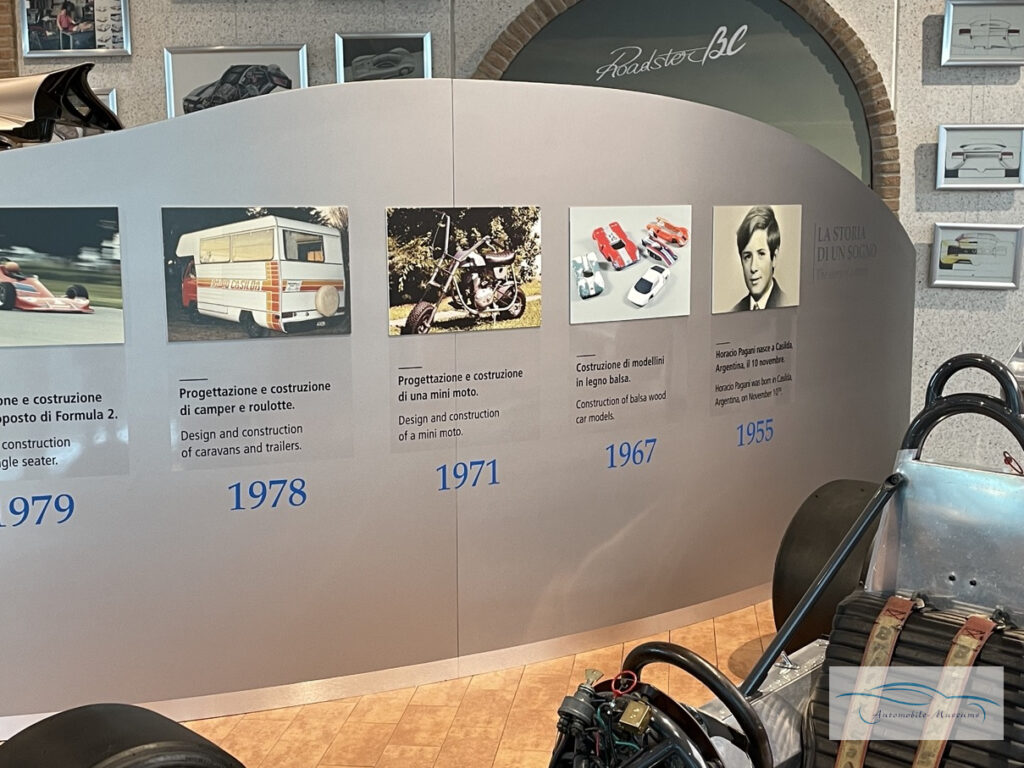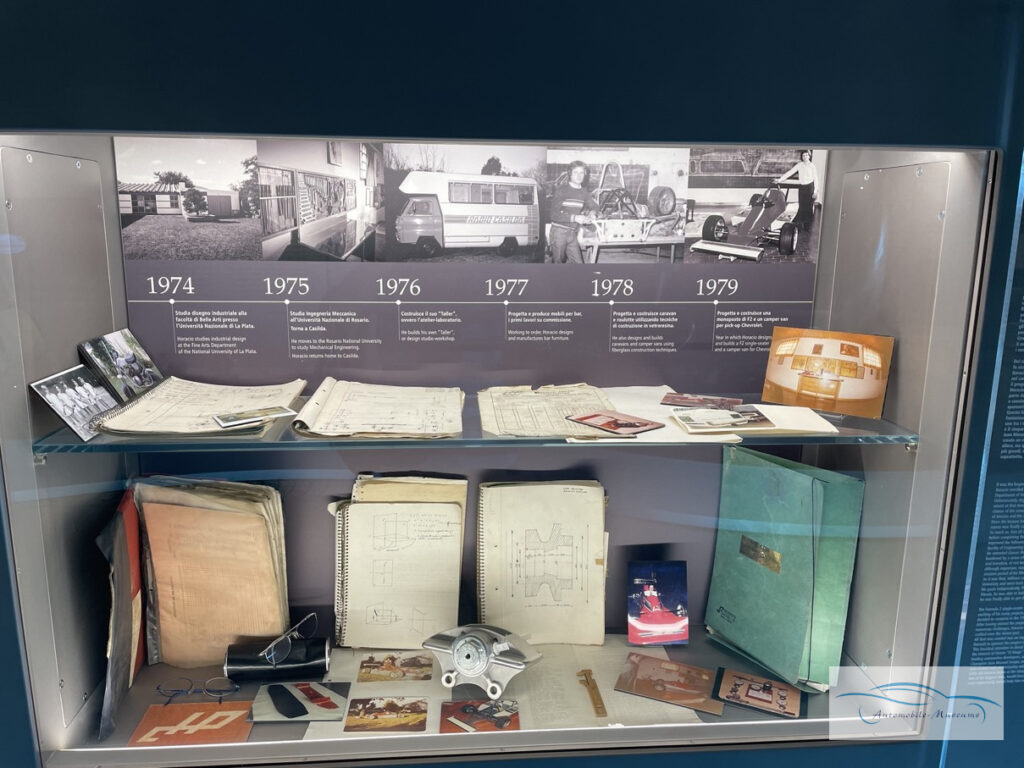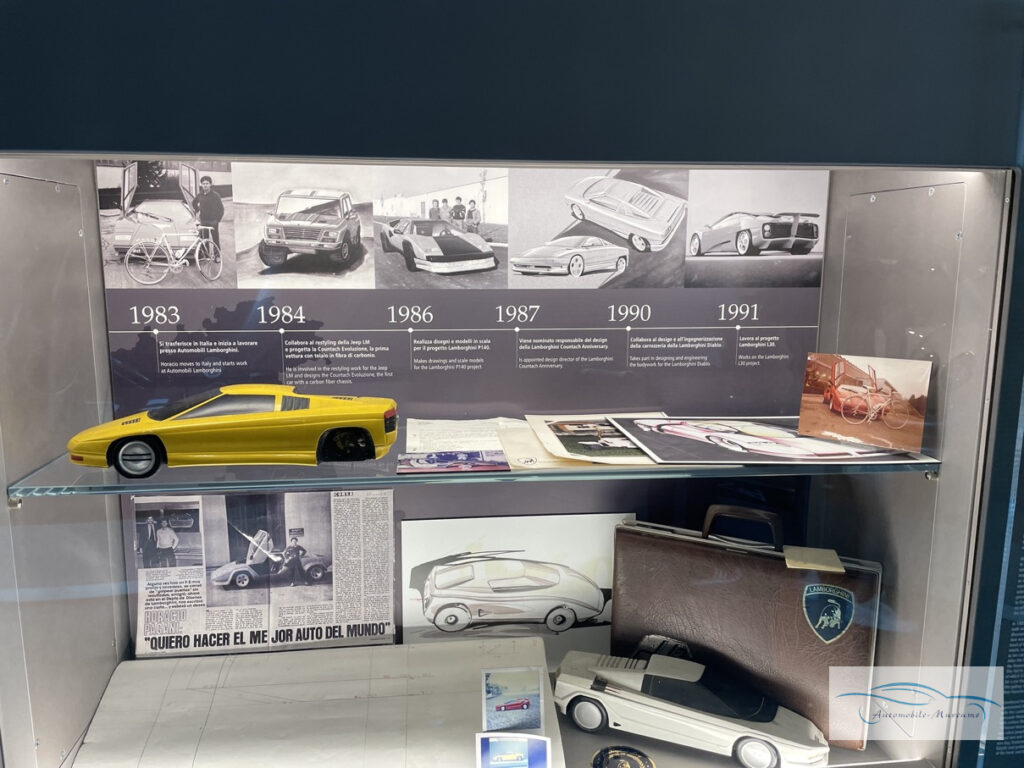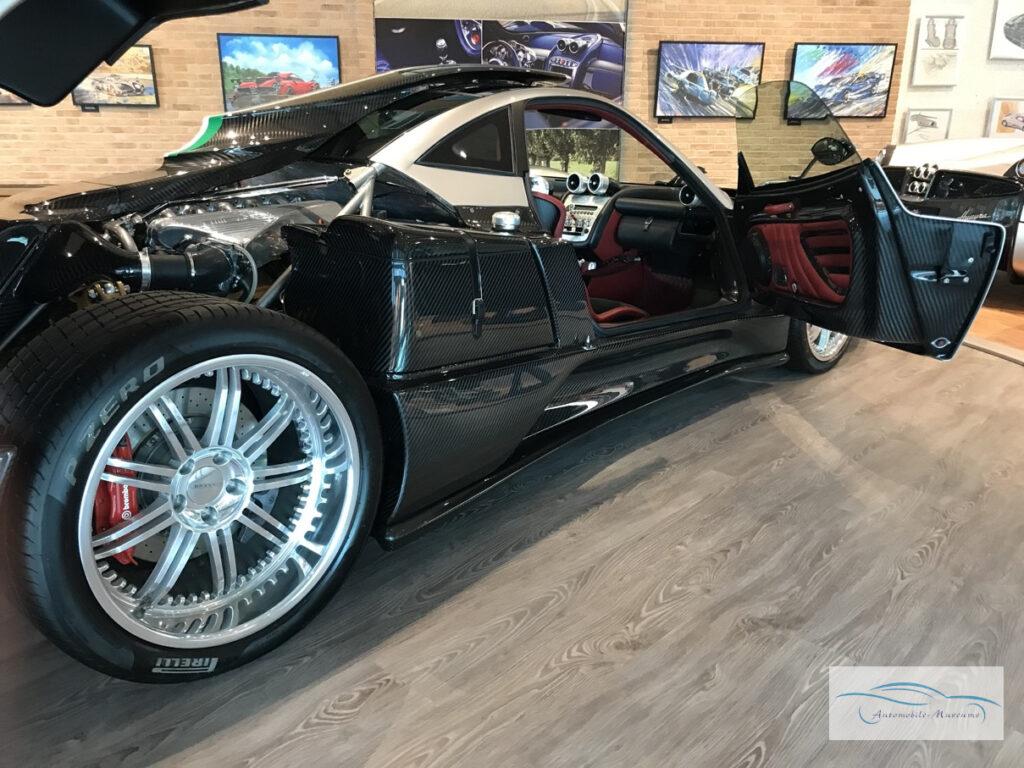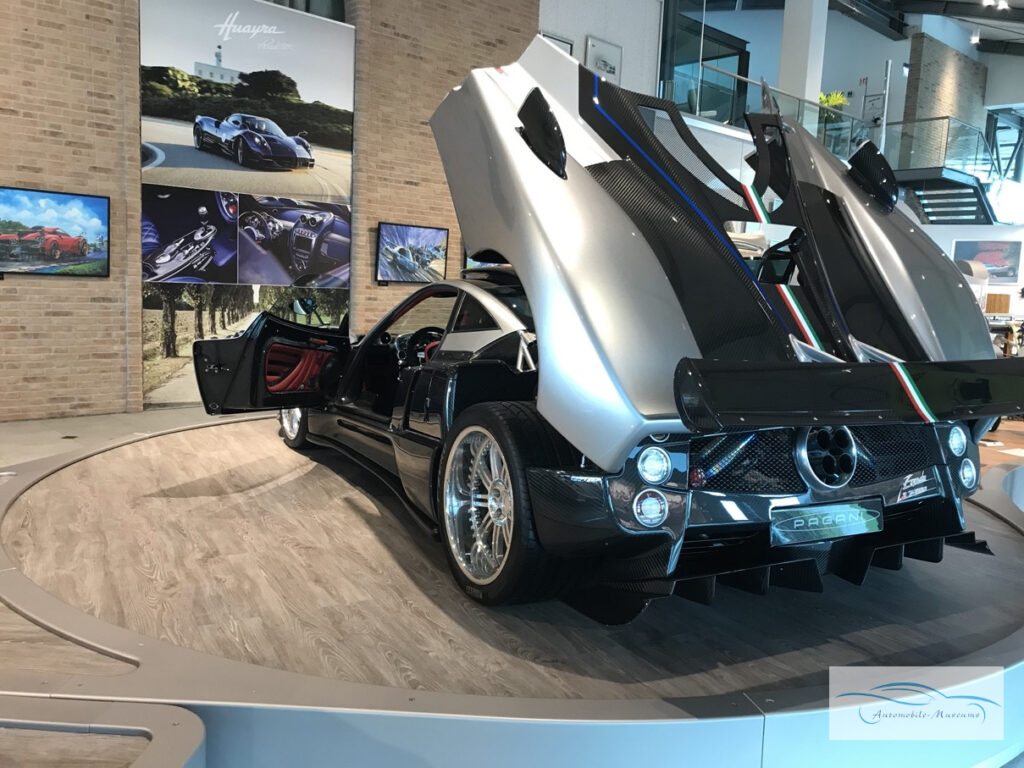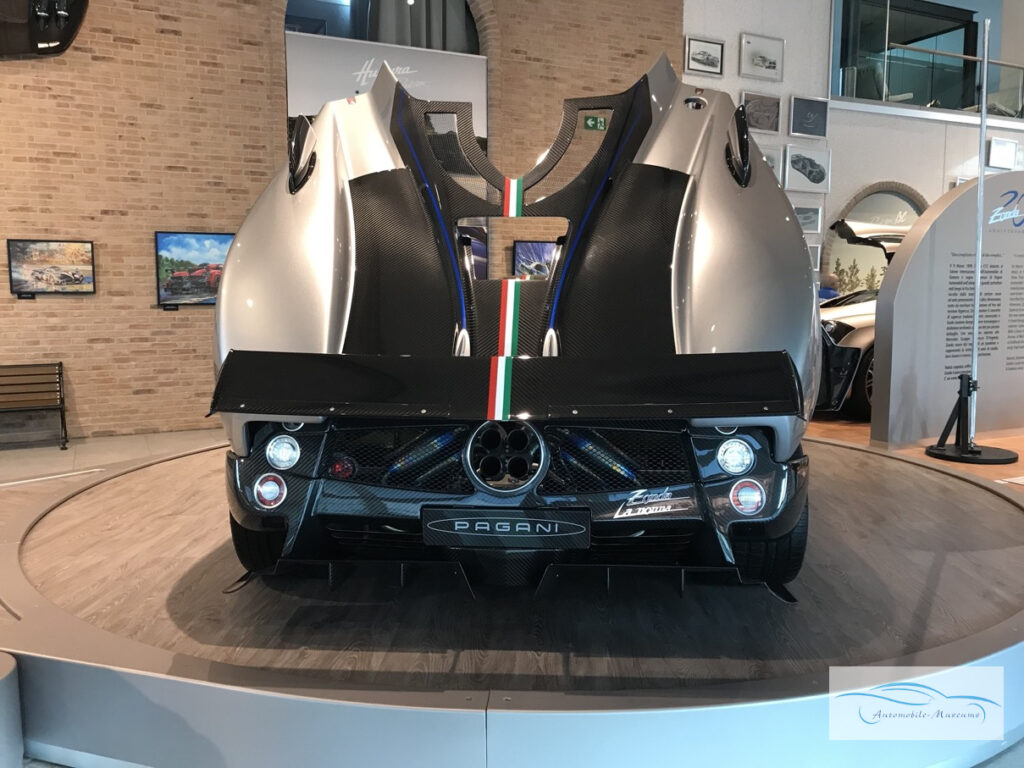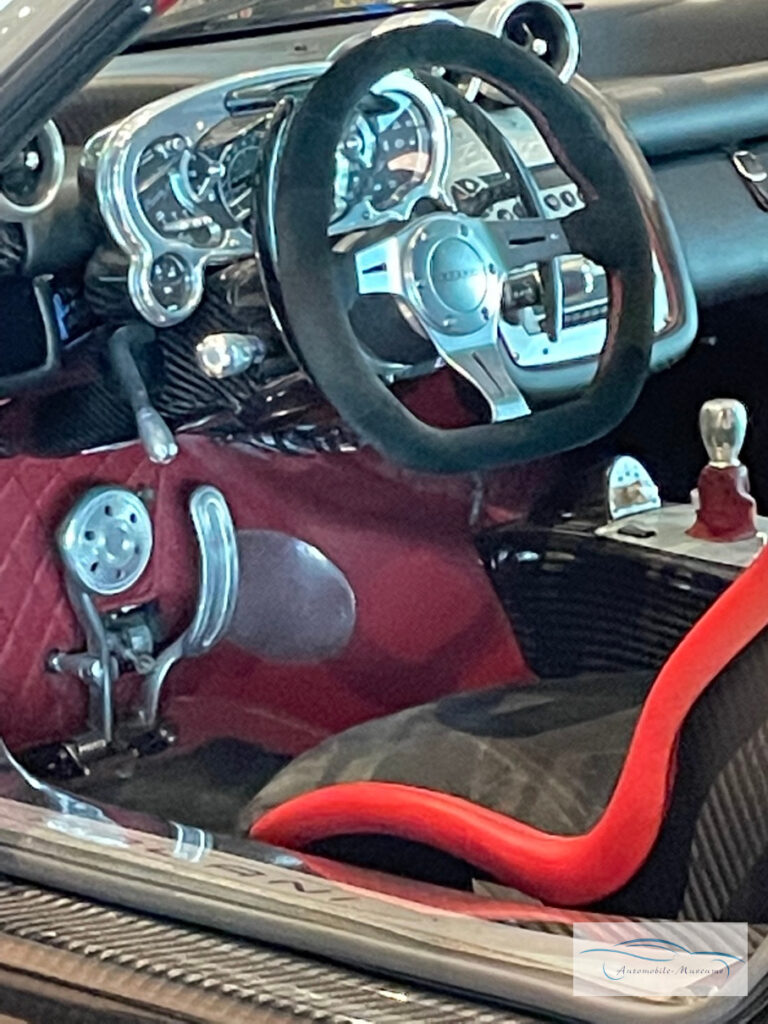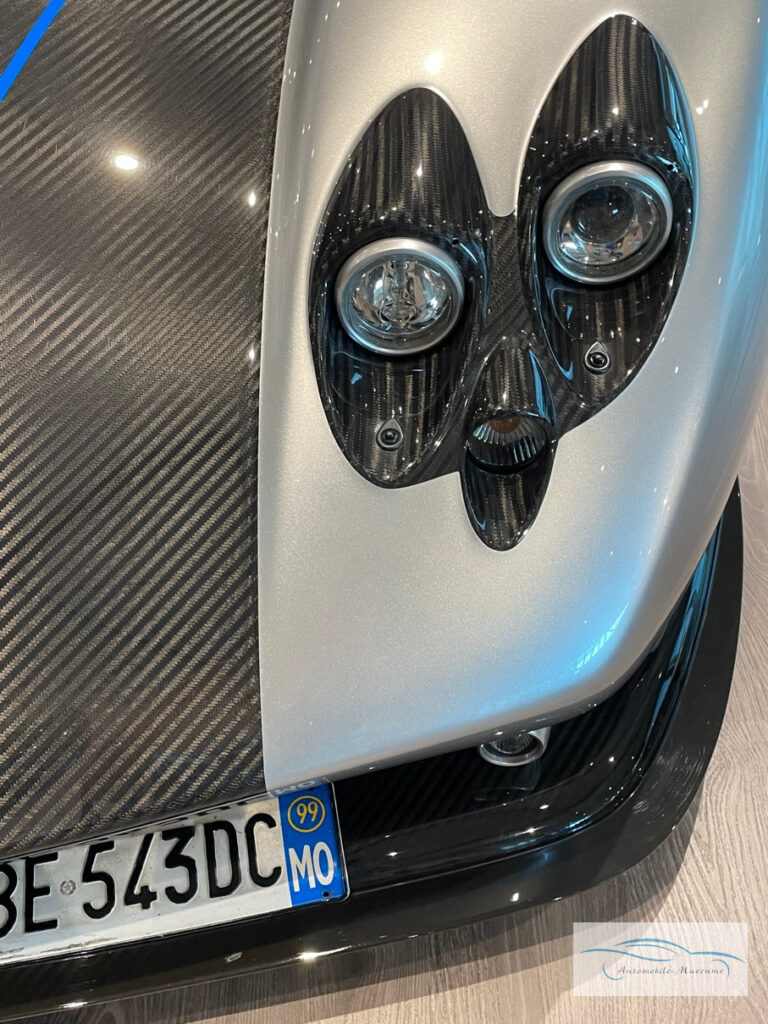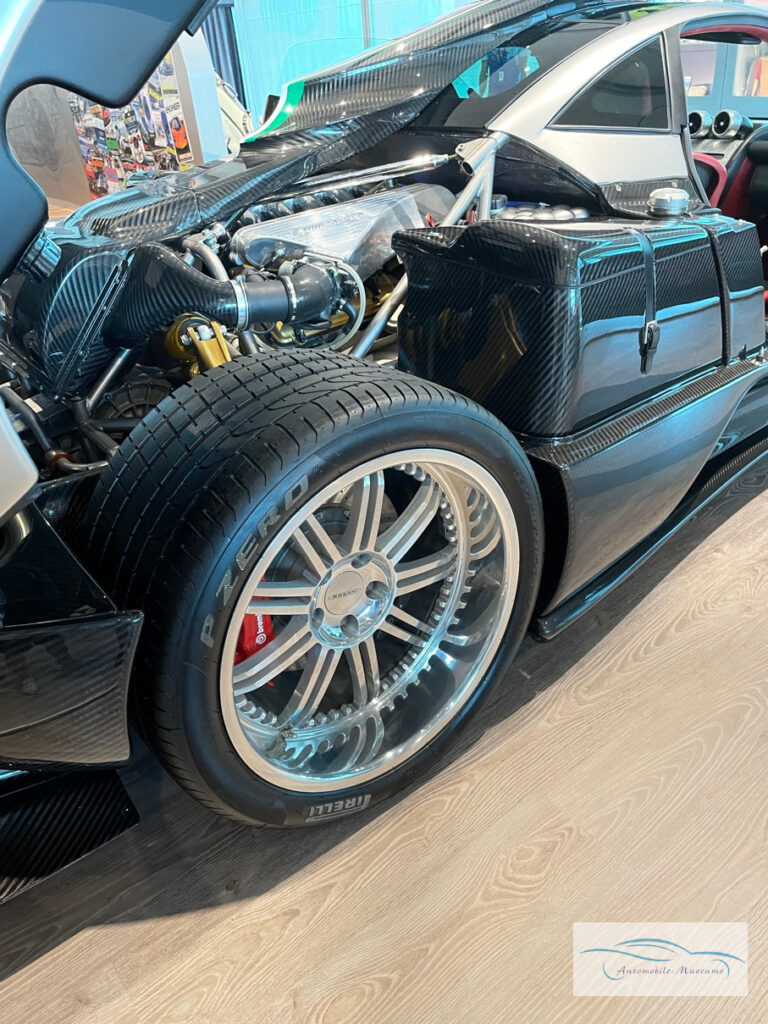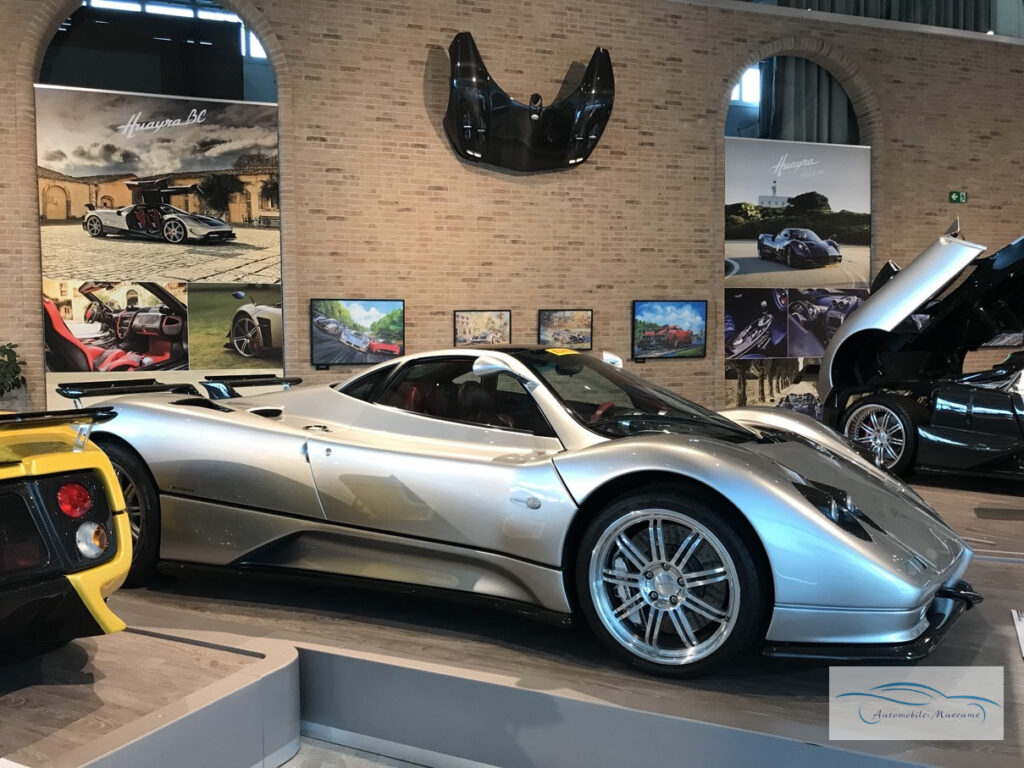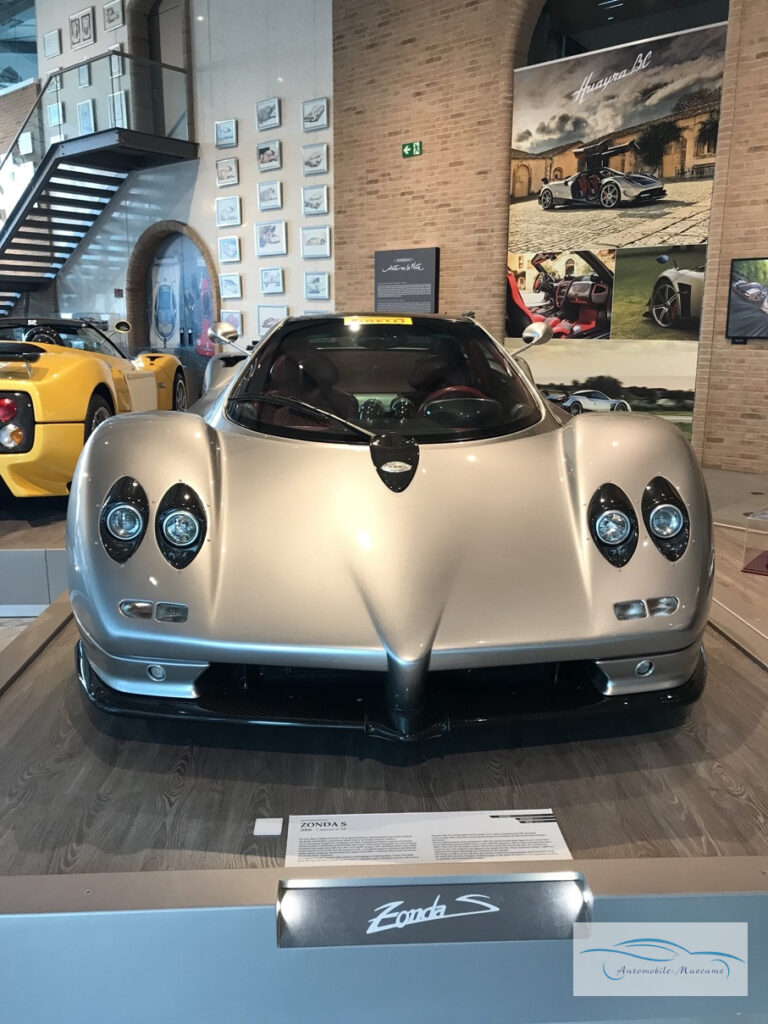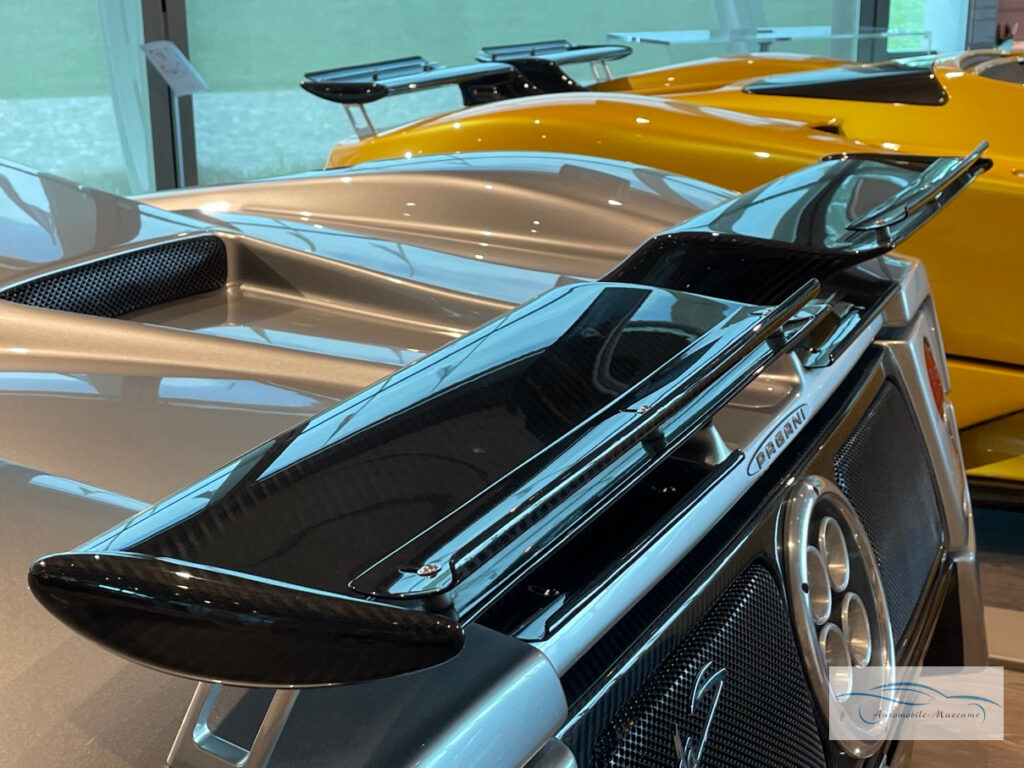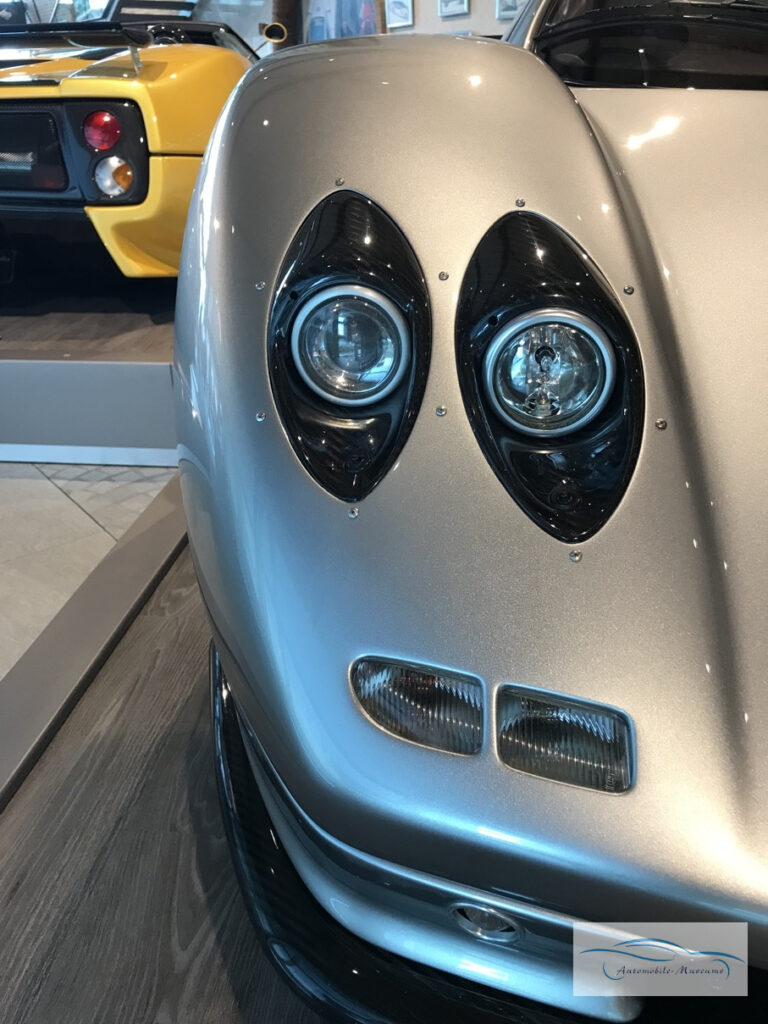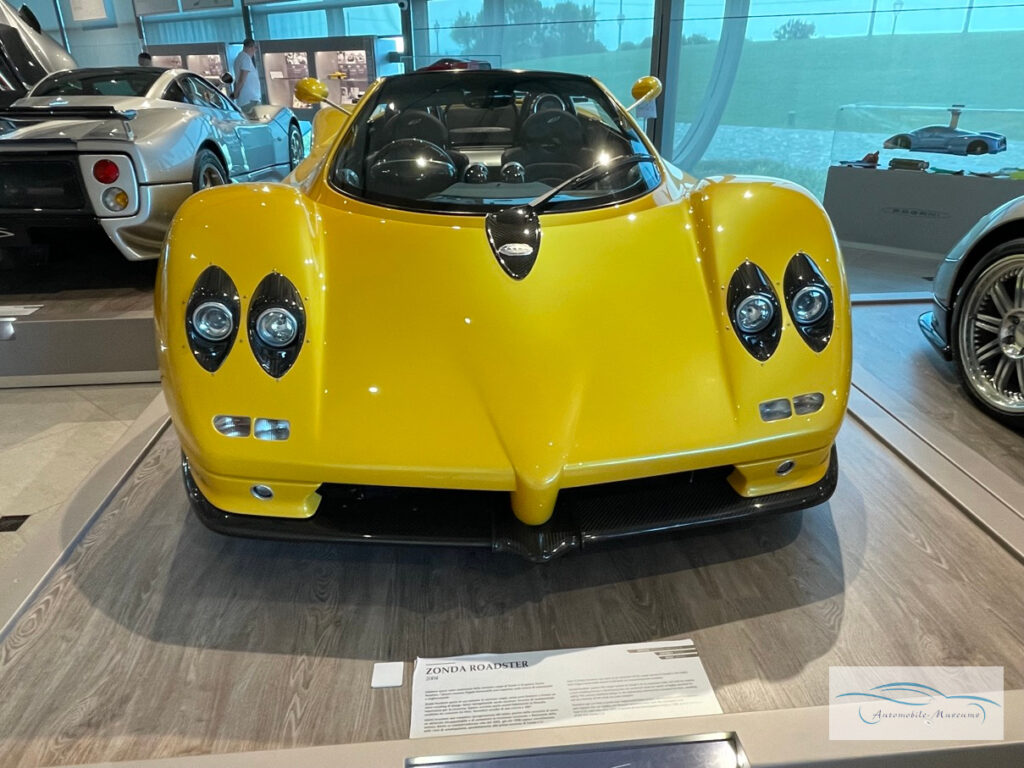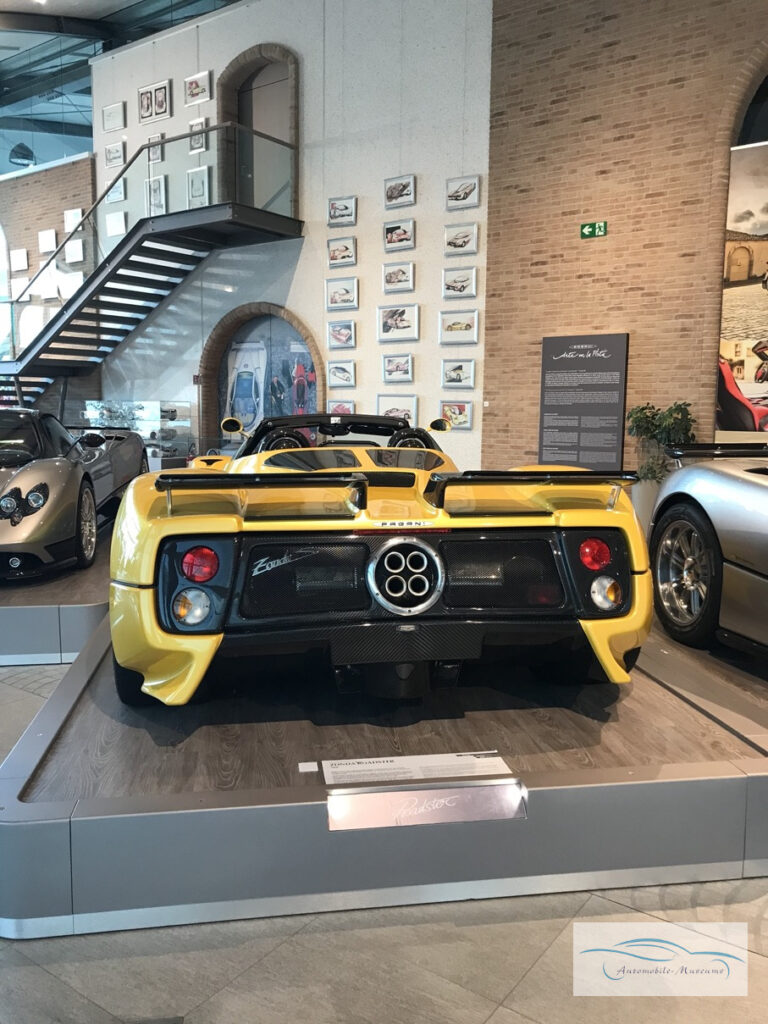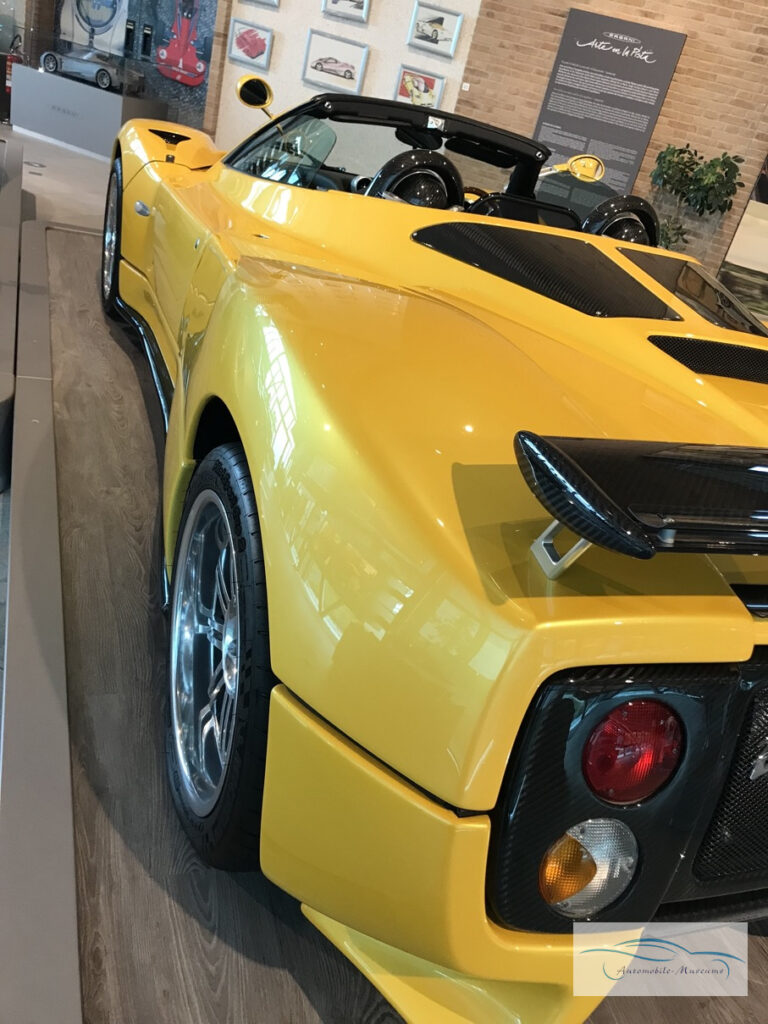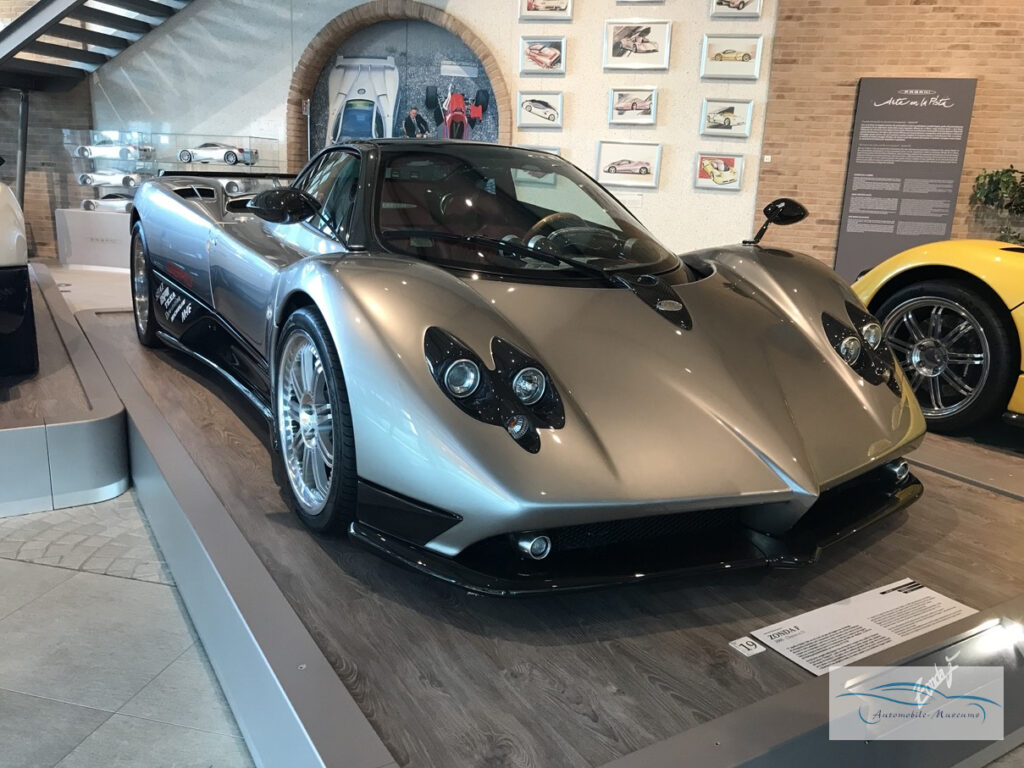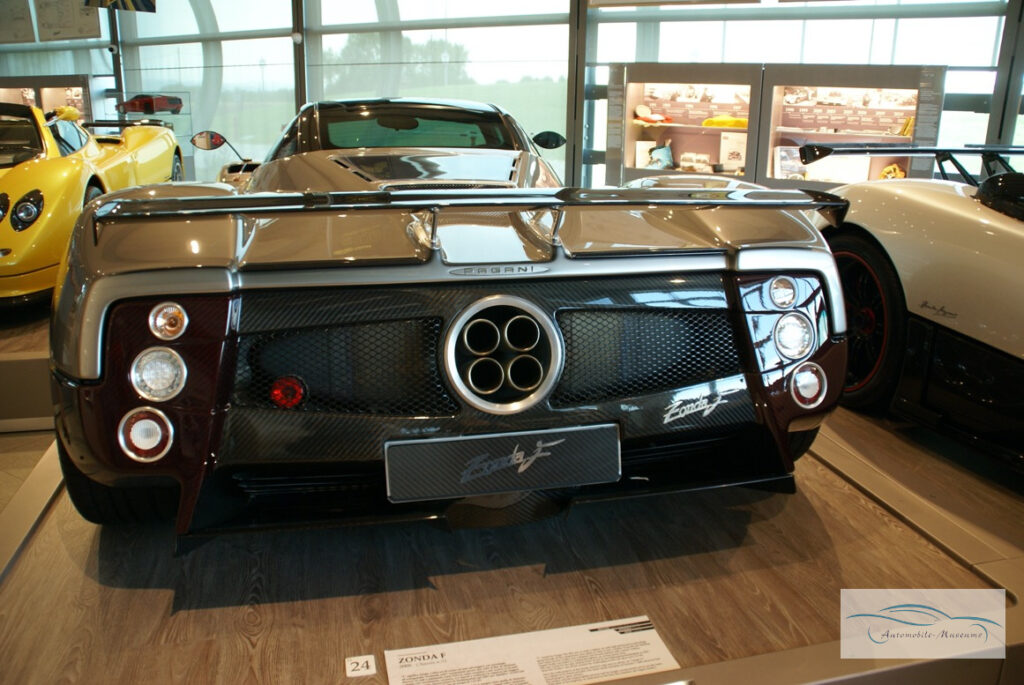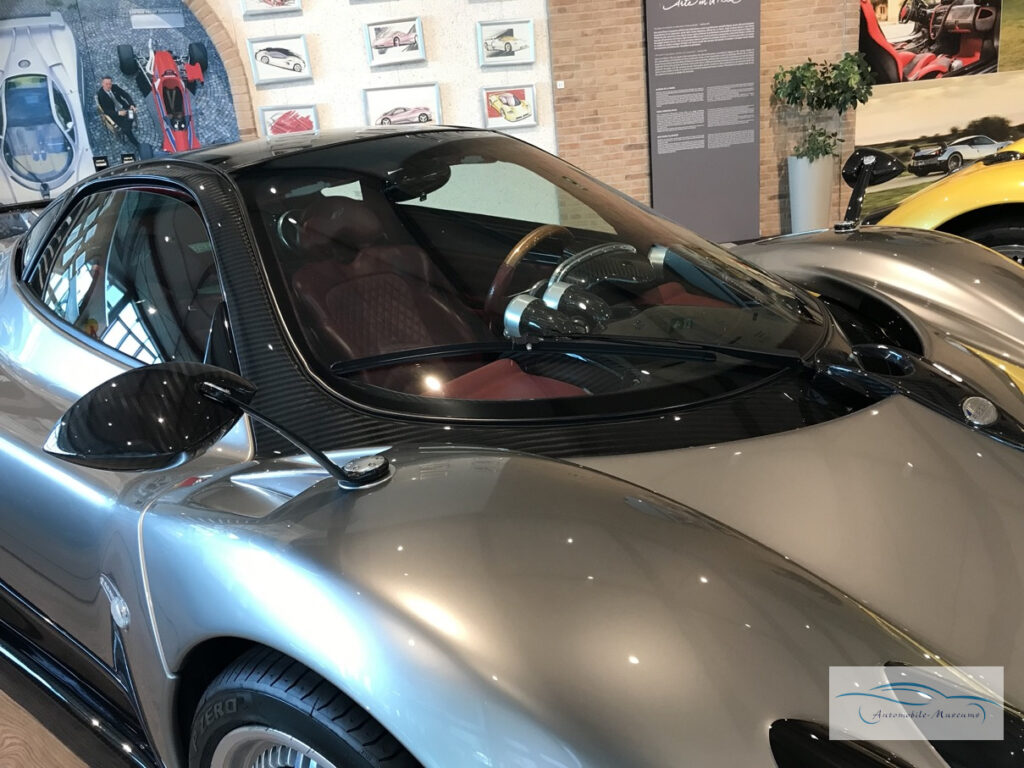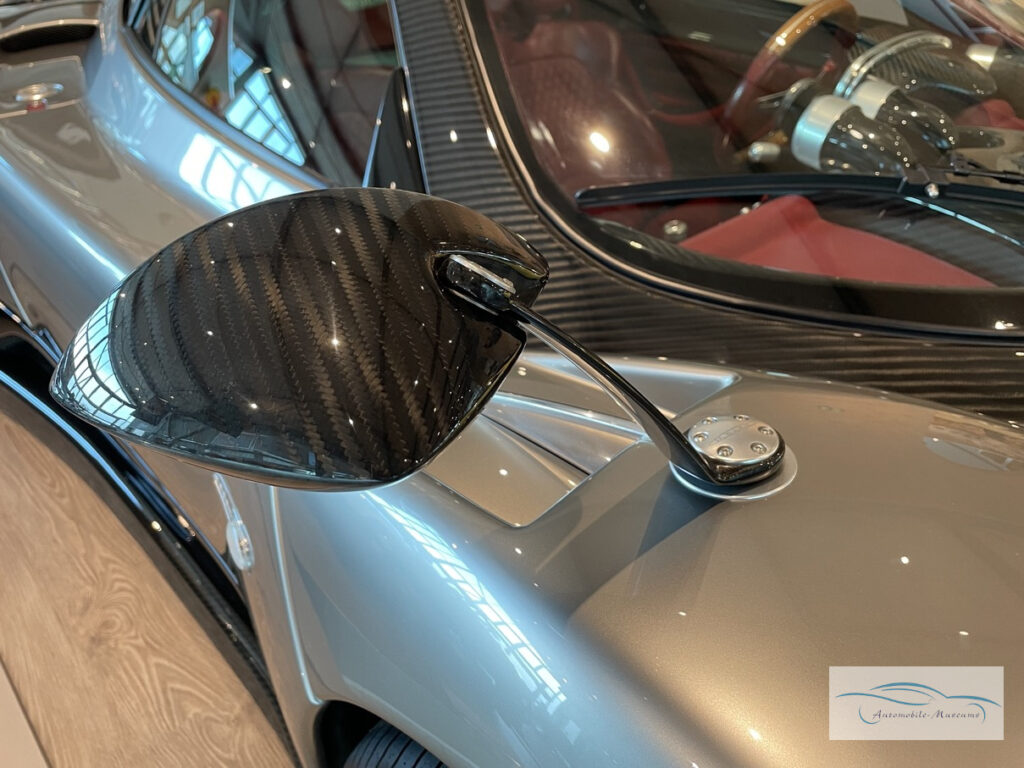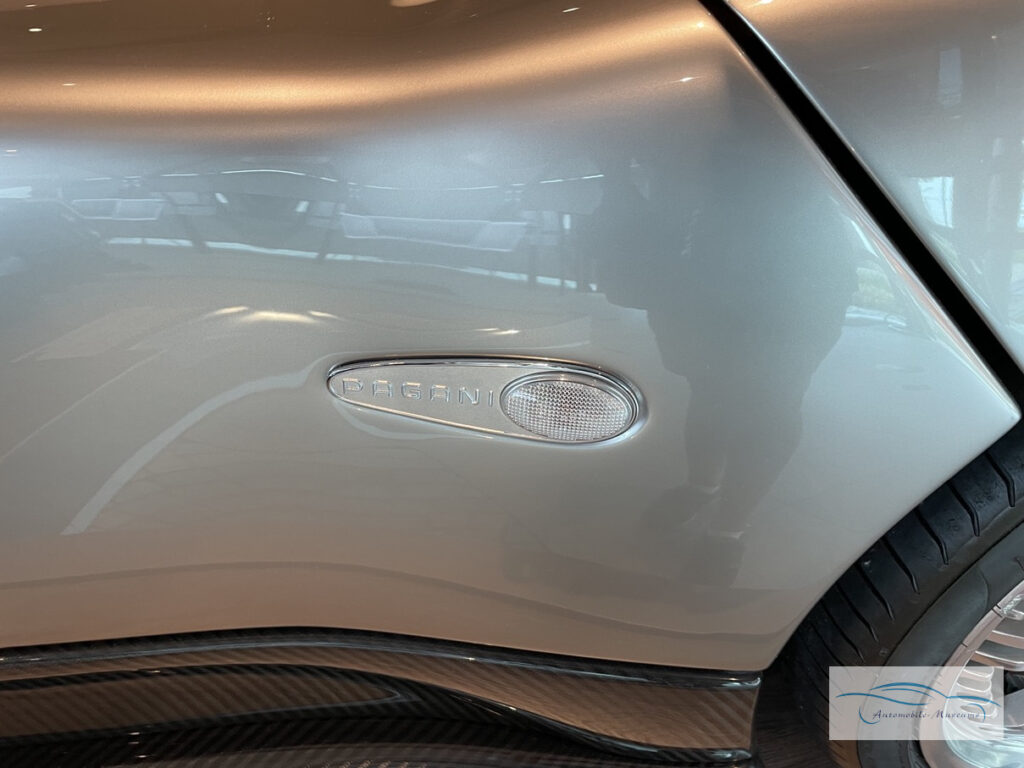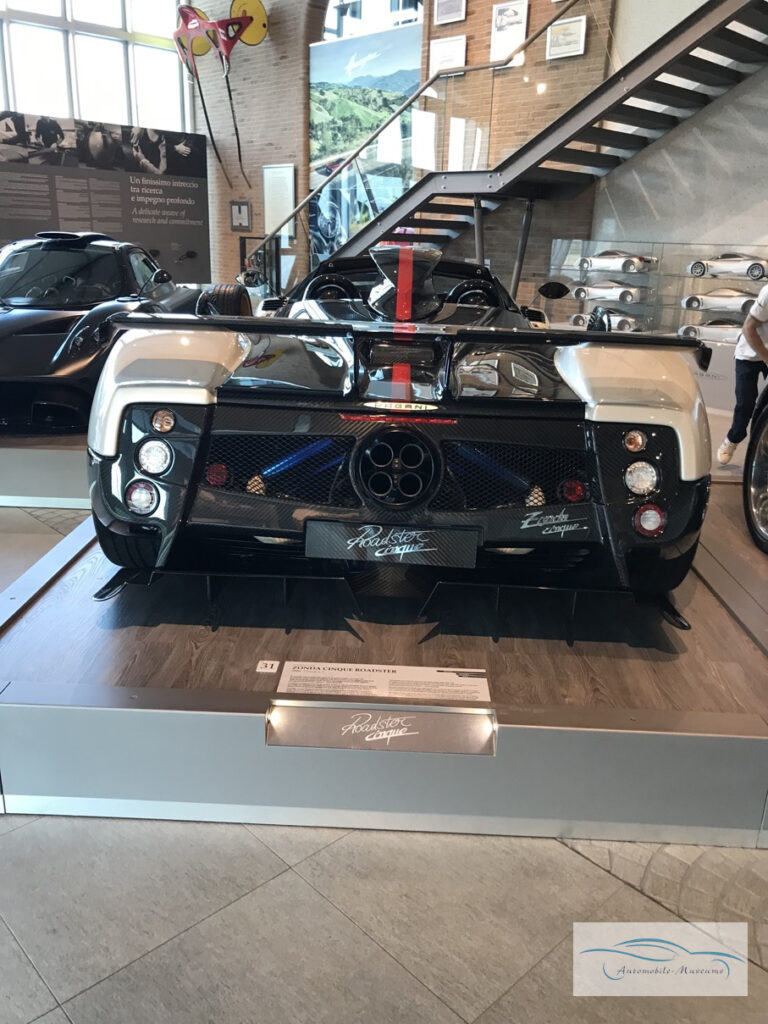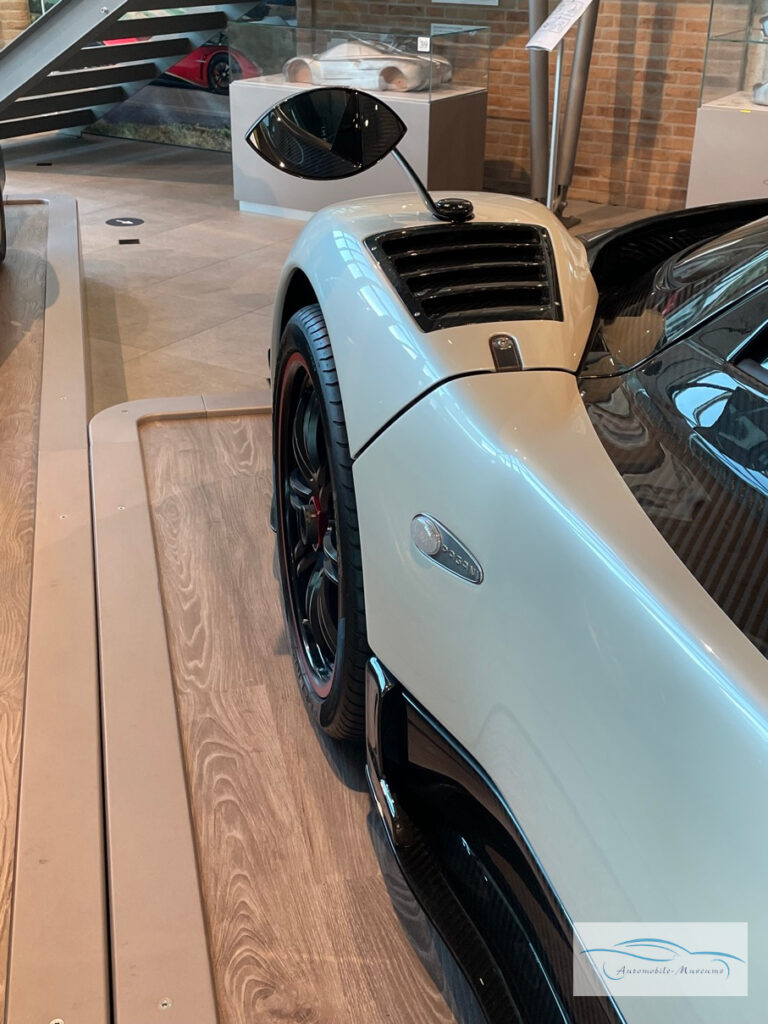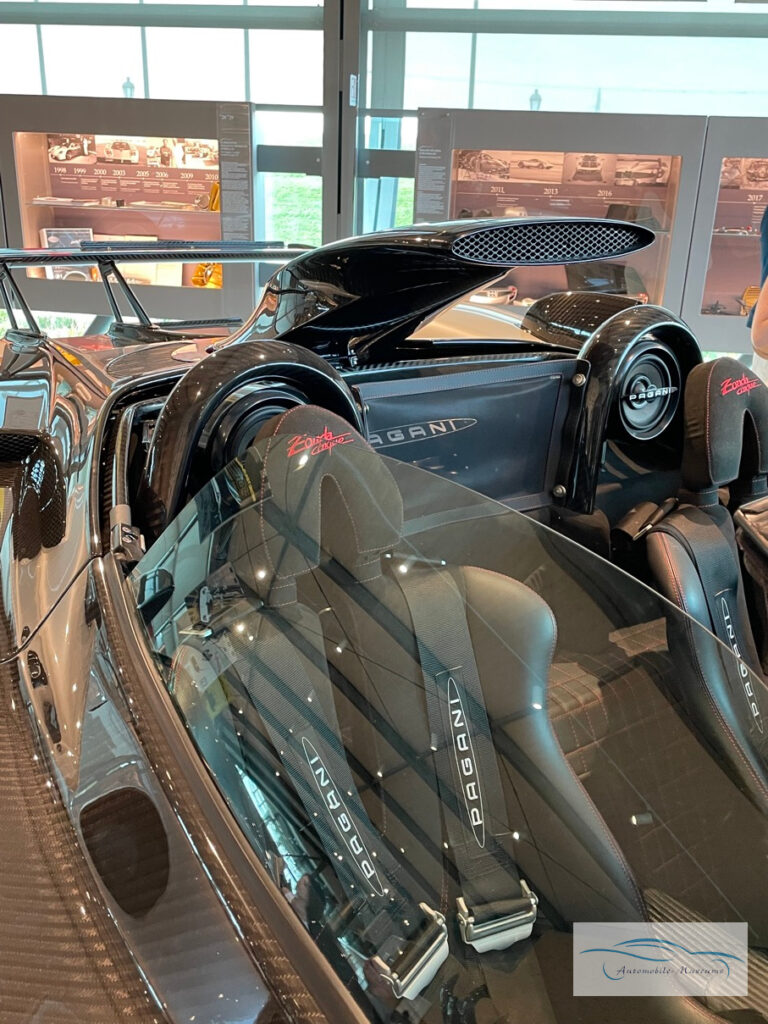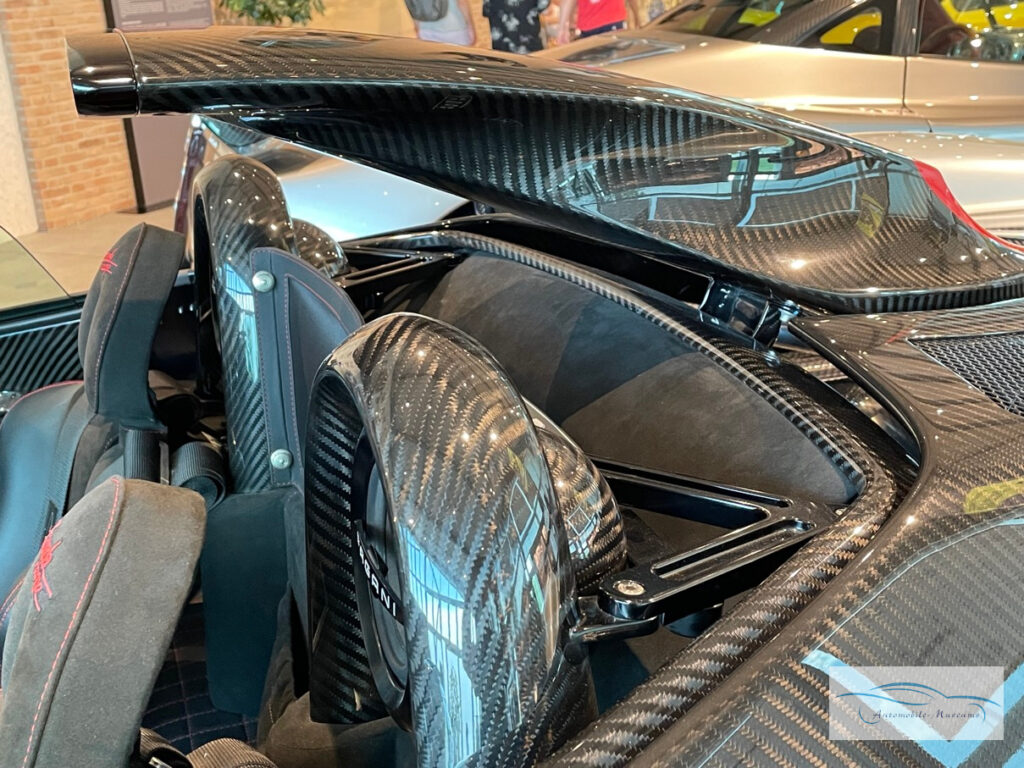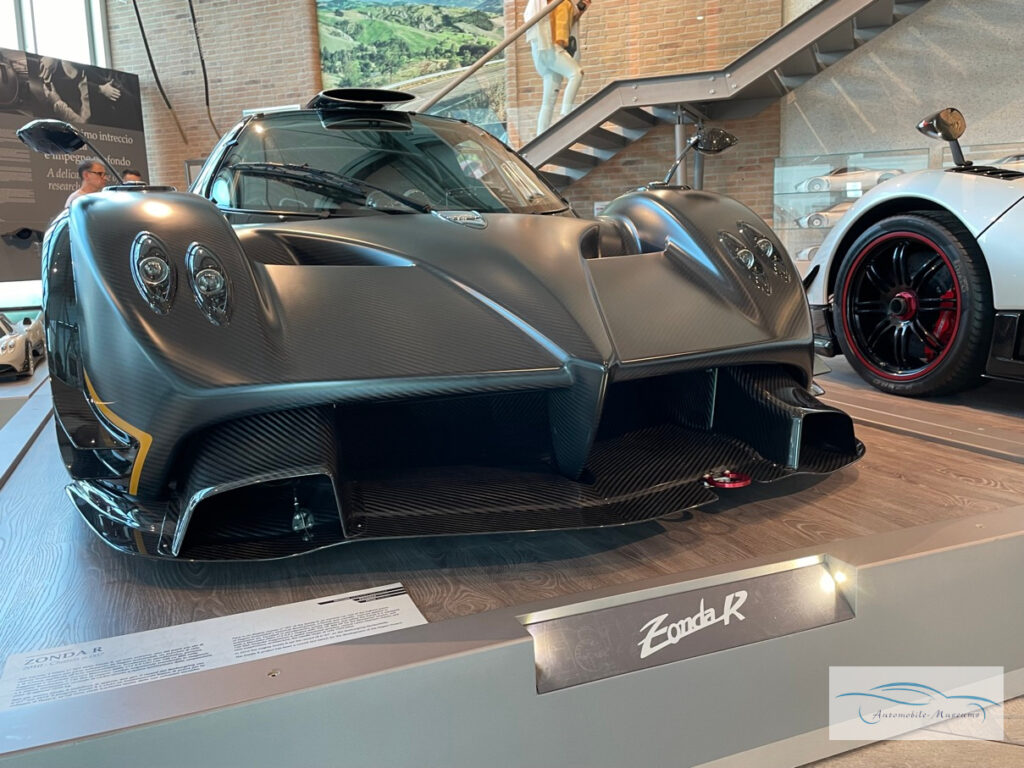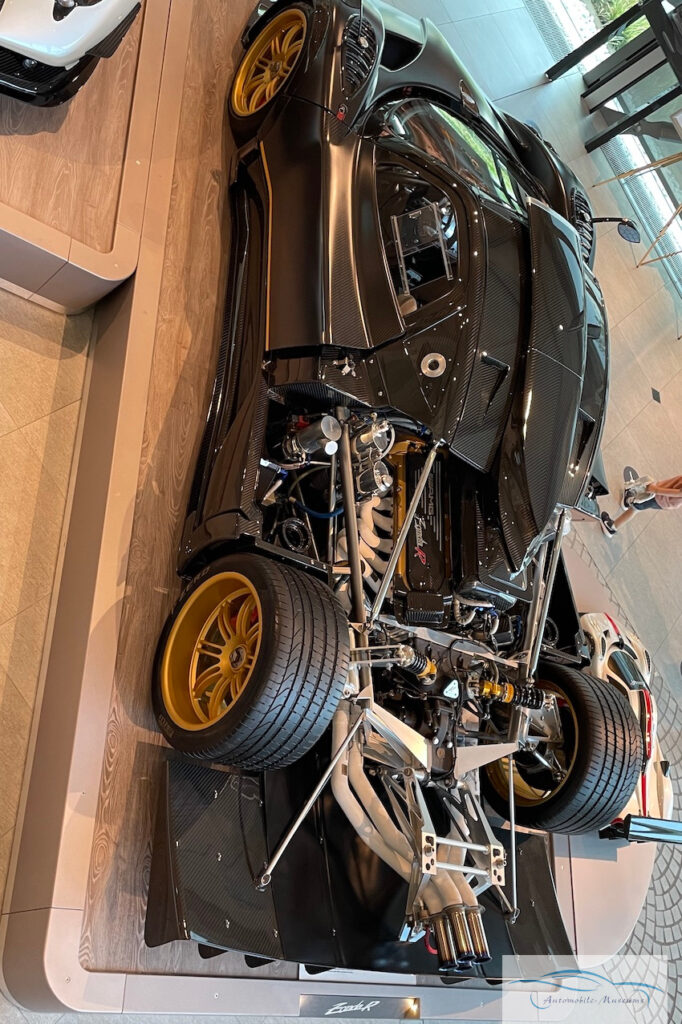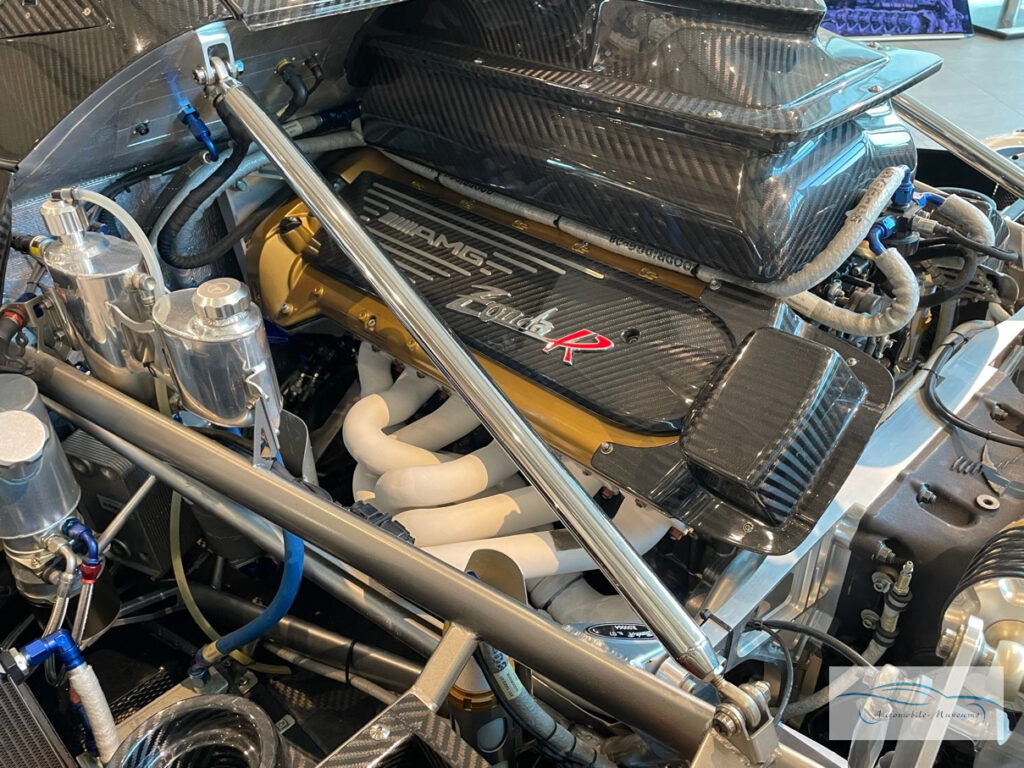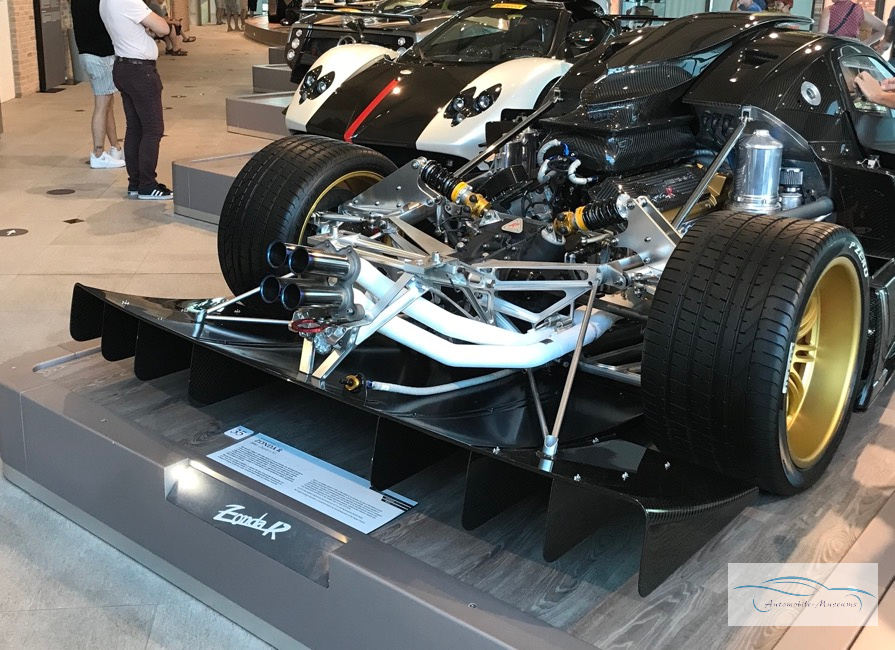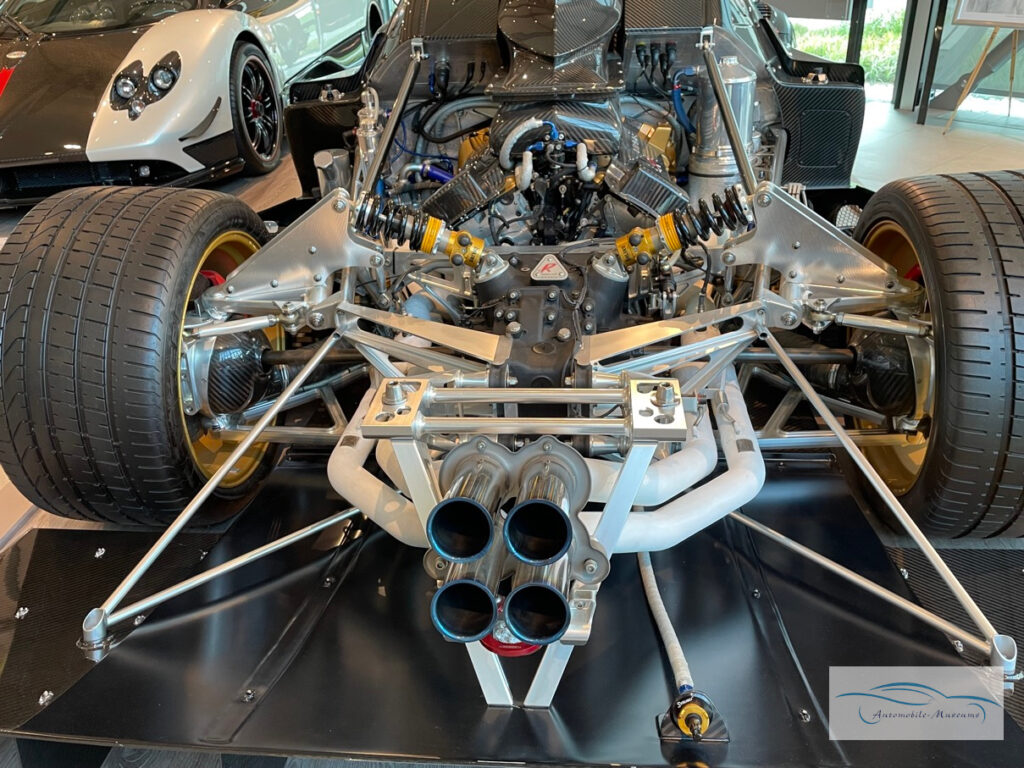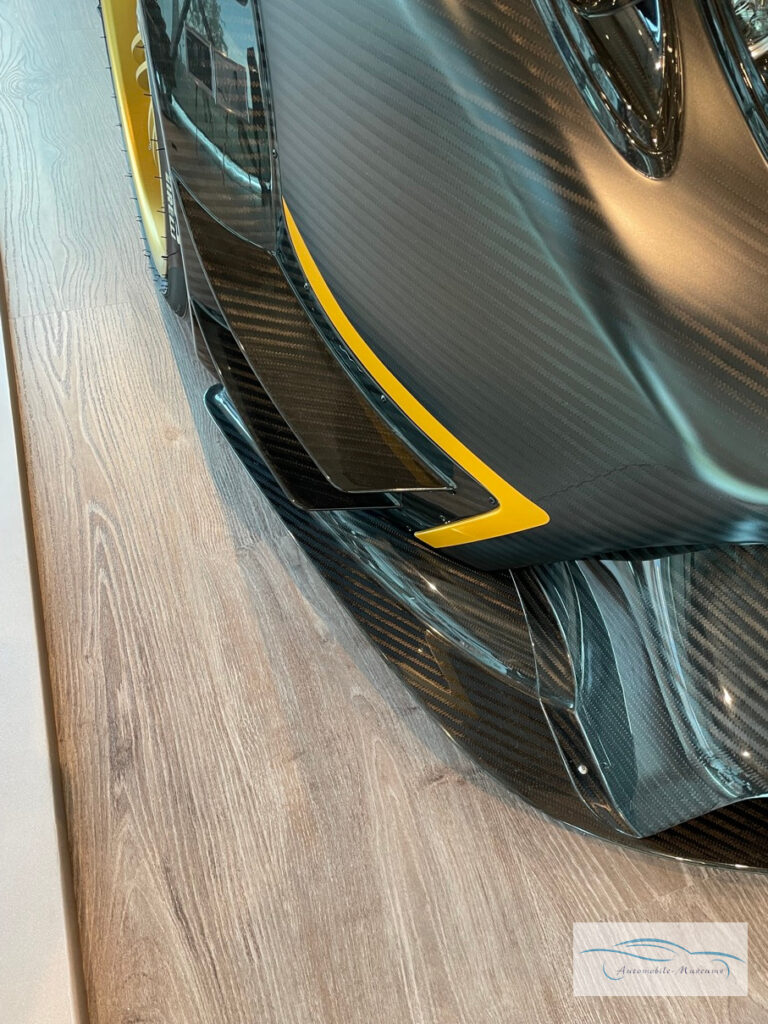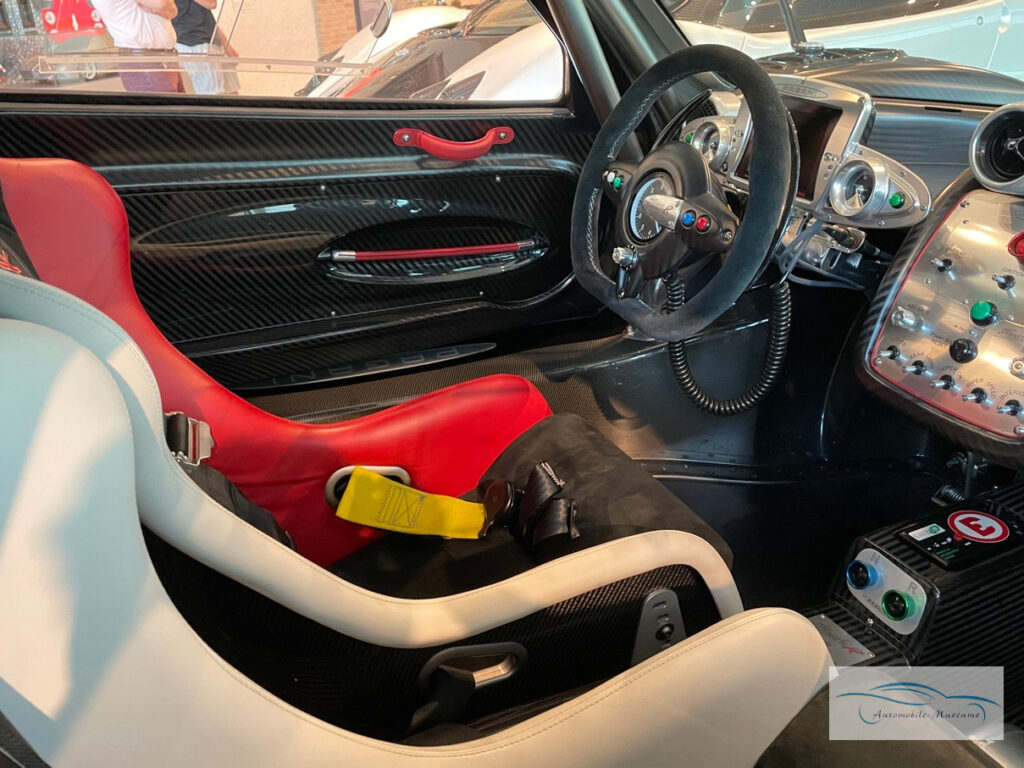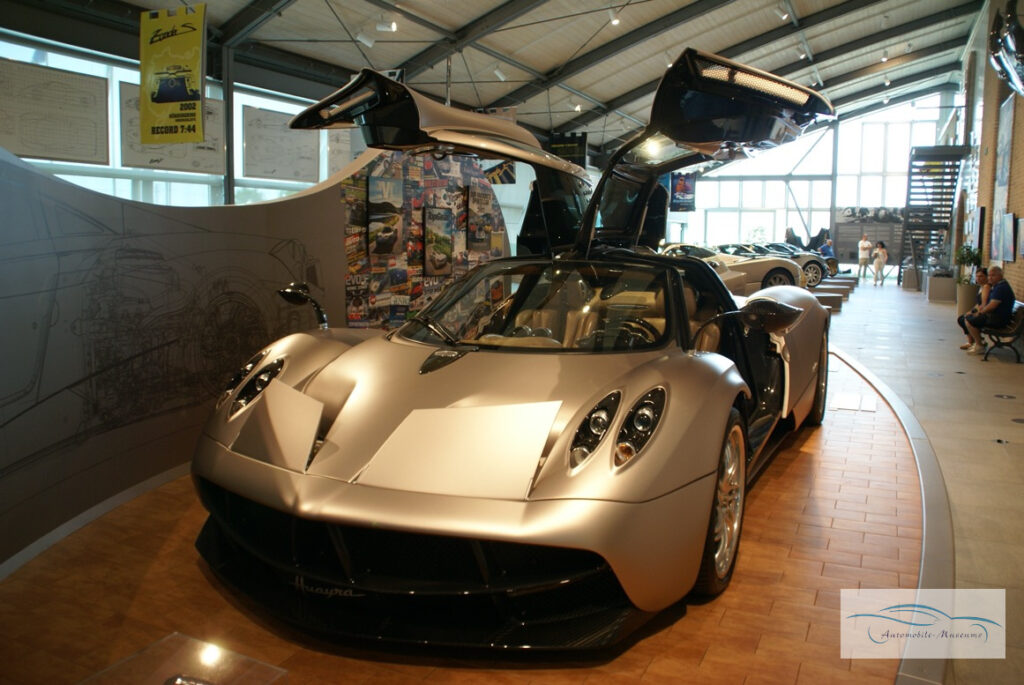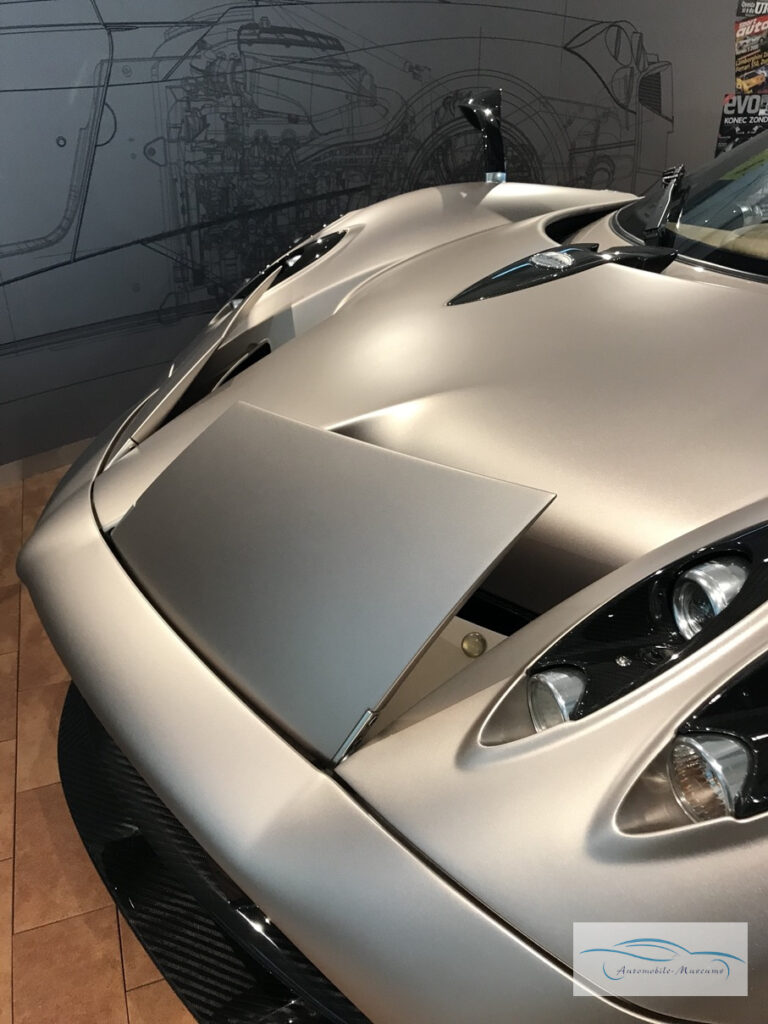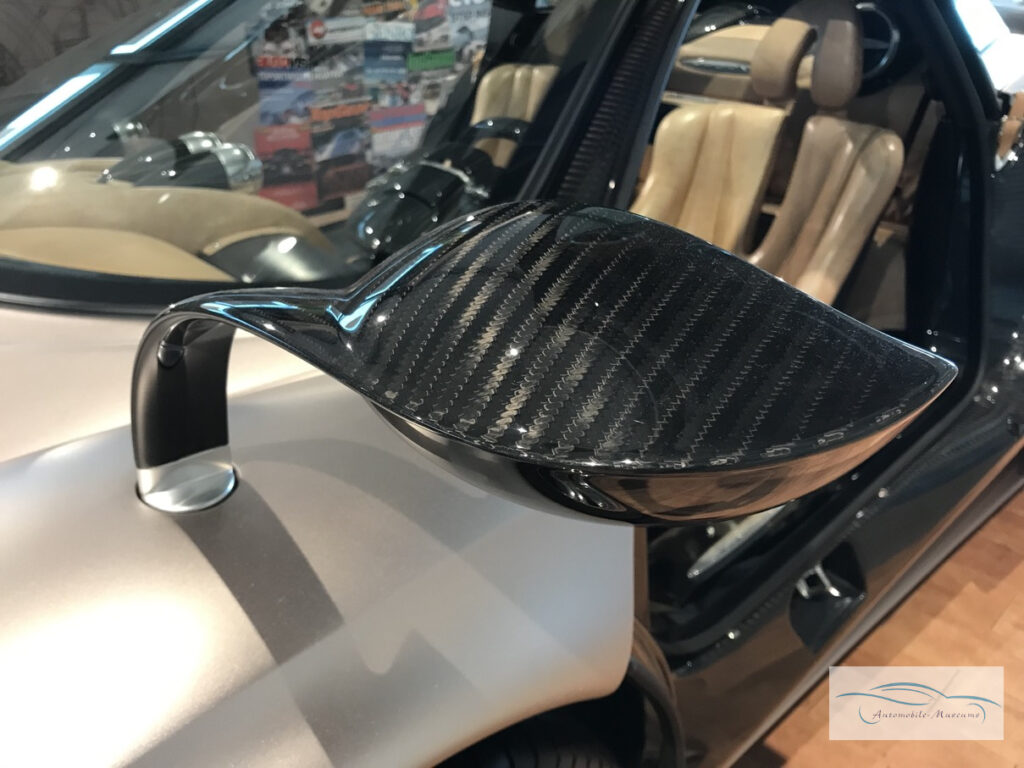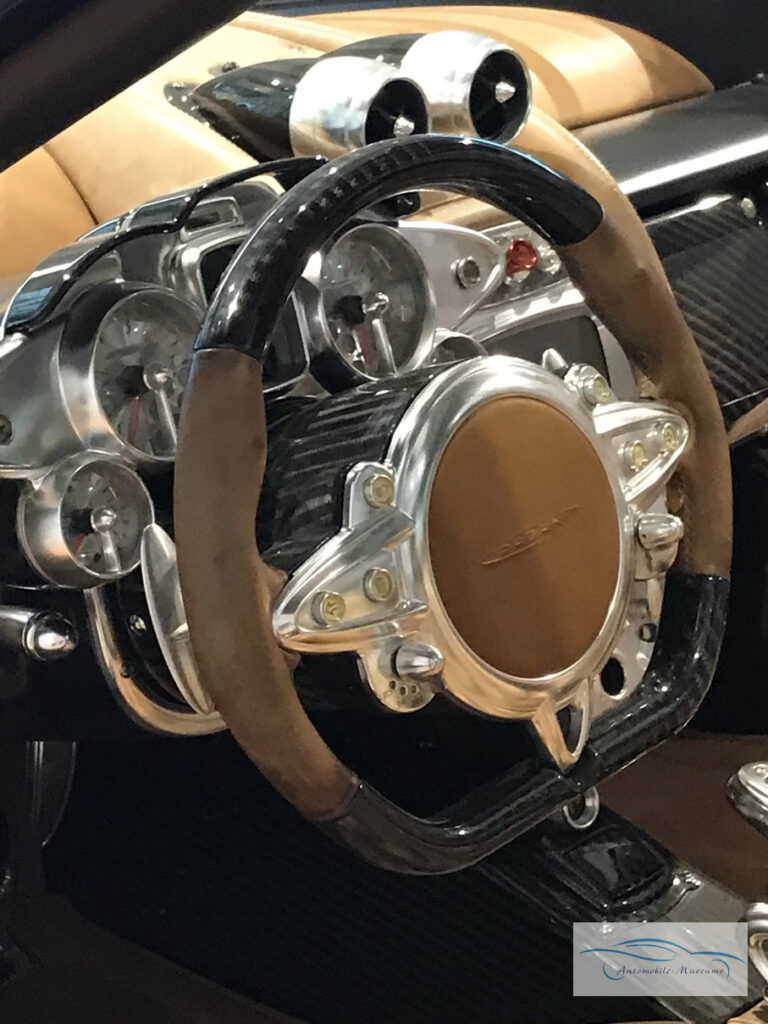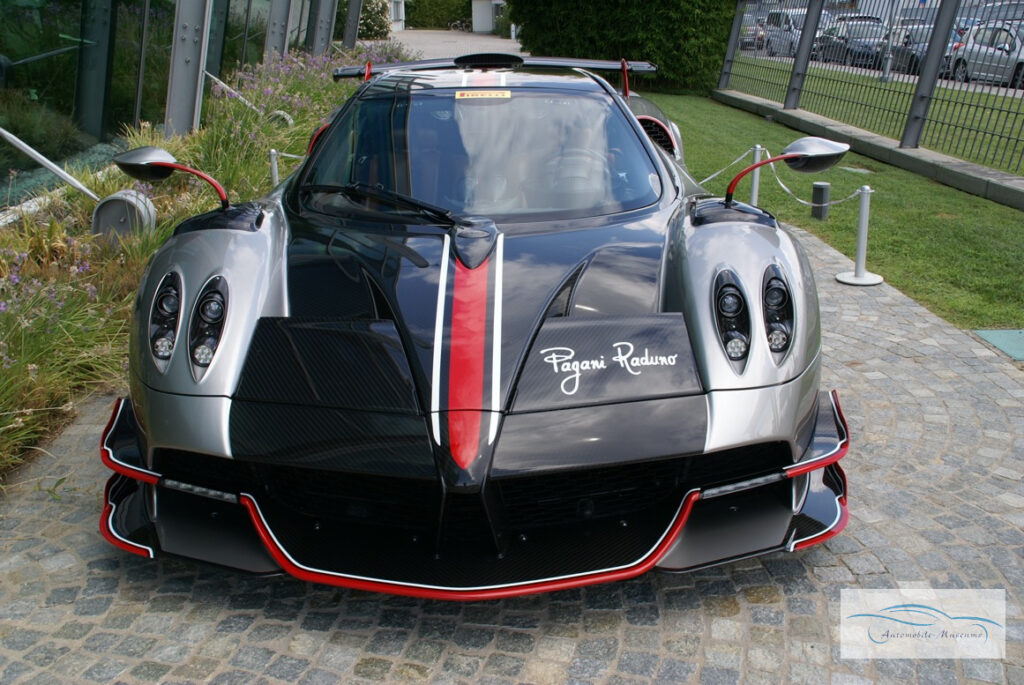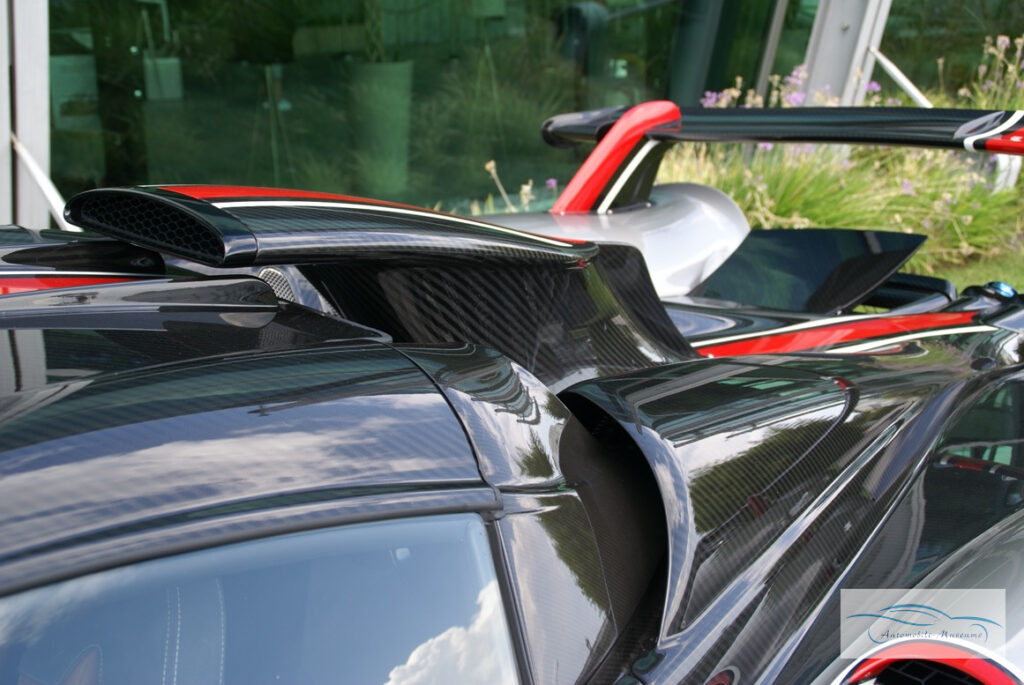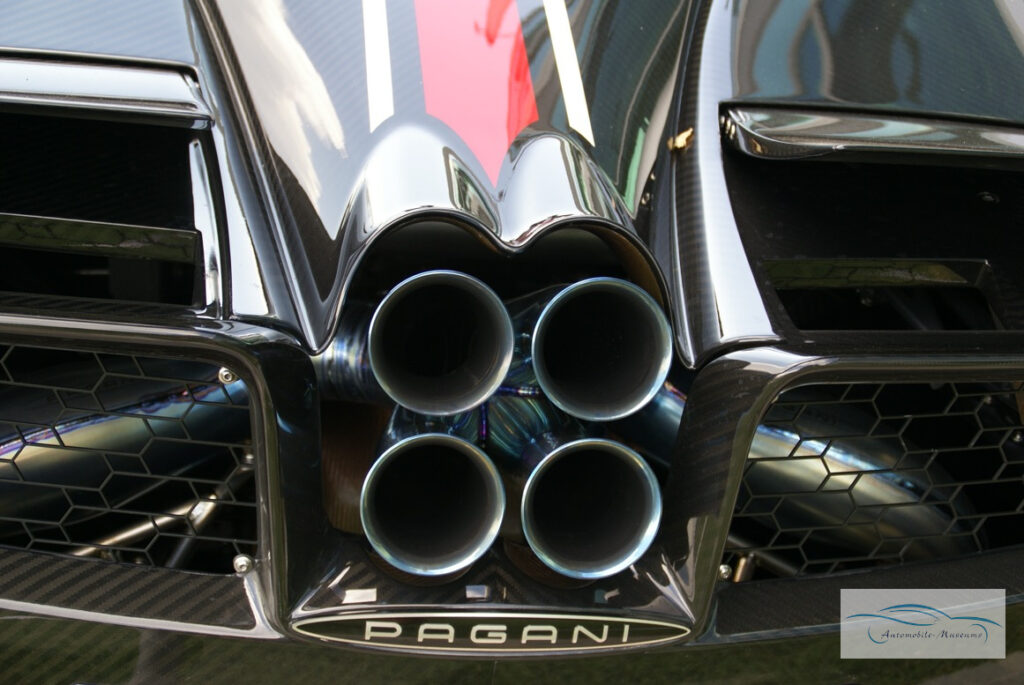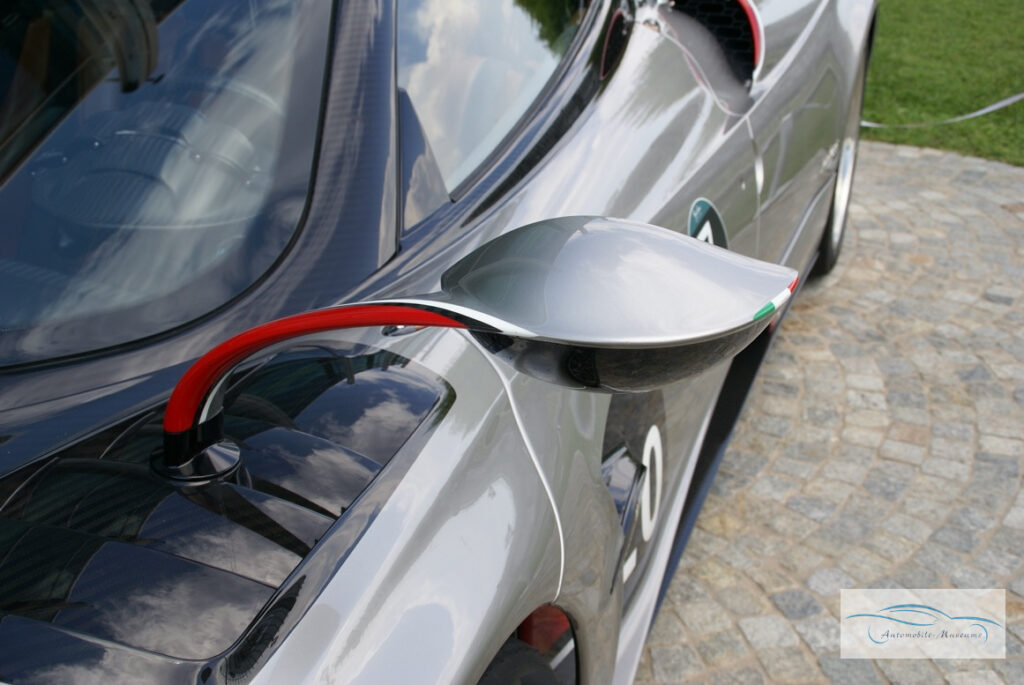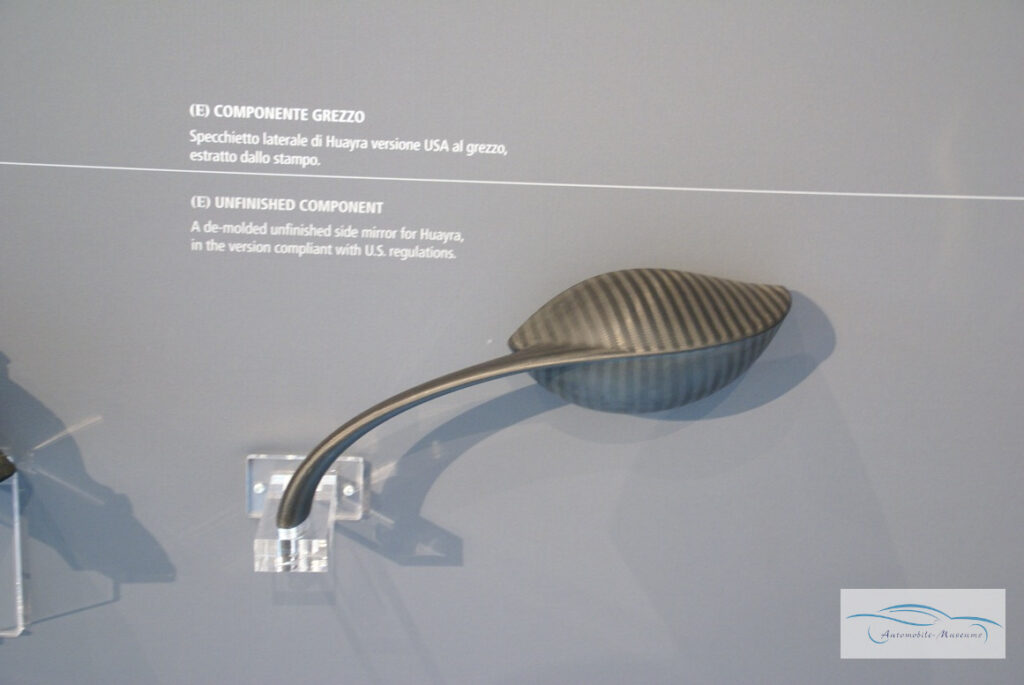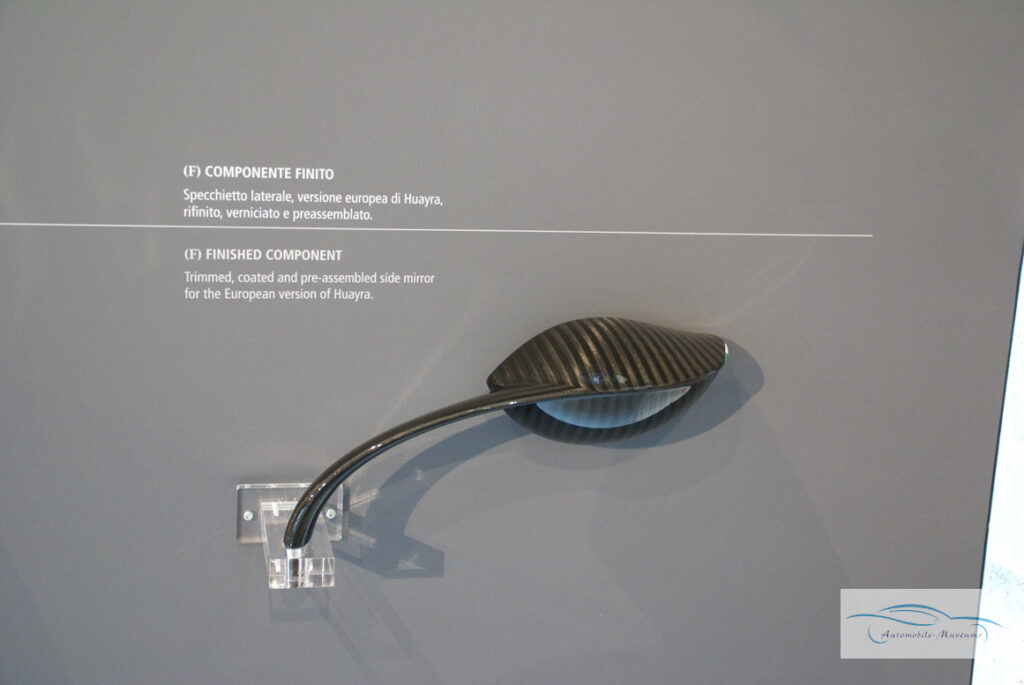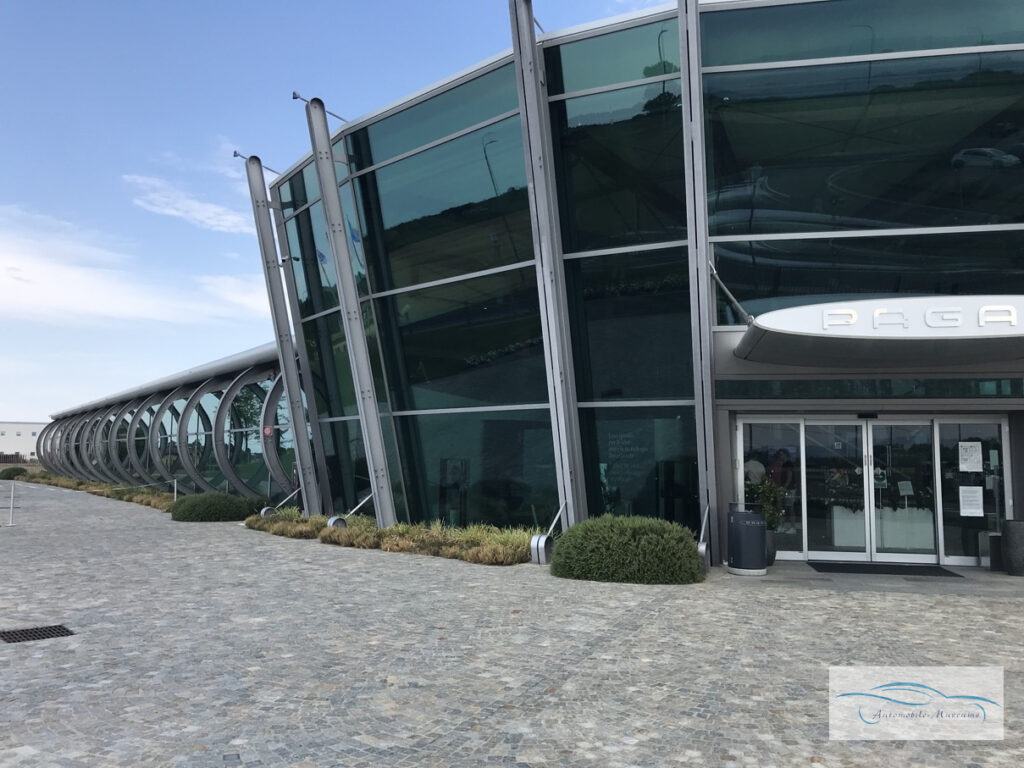

Introduction
This month, I’m taking you to Italy, to the Modena region, to visit a small museum. Small in size and number of cars on display, but certainly not small in its interest. It is the Horacio Pagani Museum. Pagani is about to celebrate its 25th anniversary, with the first Pagani being presented at the 1999 Geneva Motor Show. In just over 20 years, Pagani offered 2 models, the Zonda and the Huayra, and built about 500 cars. So you can’t expect to discover several dozen cars here. But the rarity (and their price well over a million Euros) of Pagani makes it very rare to see on, exceptional to see several, and practically impossible to admire one up close, to observe the manufacturing details and to plunge a bewildered gaze into its cockpit. That’s what makes the Horacio Pagani Museum so interesting, seeing with your own eyes what you usually see from afar or on TV. We can also thank the company for opening this museum to the public, and for also offering tours of the manufacturing workshop (we can’t really talk about a factory given the production rates). It’s a shared passion, as Pagani Automobili doesn’t really wait for visitors to the museum to sell its cars!
My Favorites
The collection of the Horacio Pagani Museum includes few cars, but only exceptional cars. Coming up with a few favorites is difficult, but let’s try anyway:
- The layout of the cars that allows you to practically walk around them
- The open models, to admire both aesthetic and mechanical details up close
- The small staircase on the side, to gain height and have a bird’s-eye view of the cars
Horacio Pagani
It's the incredible adventure of a kid born in a small town in Argentina who goes on to become the builder of some of the most desirable (and expensive) supercars in the world. Horacio Pagani is passionate about cars, racing and mechanics since he was a child. After university studies in industrial design and mechanical engineering, he created his company and developed several projects, ranging from metal furniture to caravans and wheelchairs. He also built an F2 chassis that raced successfully in Argentina, which allowed him to meet Juan Manuel Fangio, his lifelong idol, and who would become a friend. It was on Fangio's advice that he came to Italy and managed to get a job at Lamborghini. Progressing rapidly in the company, he became a specialist in composite materials and in particular carbon fiber. In 1988, he left Lamborghini to create his company Modena Design, which develops composite parts for the automotive industry, particularly F1, and aeronautics. Pagani thus acquired a great deal of expertise in the field, his goal being from the outset to develop and build his own supercar. This project will allow him to implement the techniques he has acquired and to push his attention to detail and perfection to the extreme. Introduced in 1999, the Zonda impresses with its unique lines, performance and all-carbon bodywork, a first for a production car.




History and genesis
At the entrance to the museum, the first podium presents Horacio Pagani’s first creations in Argentina, from the small motorcycle of adolescence to the F2 powered by Renault, and you can see that attention to detail and quality was already in his DNA. A mural and numerous photos are a reminder of his youth, which was filled with a passion for mechanics.
Zonda
One might fear that with only 2 models presented (the Utopia, the 3rd Pagani model has just been launched), there will be few cars to see. There are still a dozen cars, the Zonda (a dry, hot wind from Argentina) and the Huayra (name derived from the God of the Winds in Quechua) having been declined as coupe and roadster, and in several (very) limited series. There have also been several unique models, often developed in relation to or at the particular request of customers. Obviously, these unique models are not on display.
A rotating podium welcomes a model, the Zonda “La Nonna” (Grand Ma) during our visit. La Nonna (1998) is the No. 2 chassis of the Zonda which has been used to develop and test many technical and aerodynamic solutions for the Zonda versions. The engine is a Mercedes-AMG V12. La Nonna has been completely restored for display, after more than 550,000 km of testing. Wide-open doors and hoods allow visitors to take an interest in the innards, many details invisible from the outside, and admire the care taken in the finish of the interior, one of the most astonishing aspects of Pagani. There are some parts cut from a block of metal, the visible mechanisms such as for the brake and accelerator pedals.
Carbon is ubiquitous and clearly visible, including for luggage custom-made to fit on the rear pontoons. The engine is overhung by an airbox, obviously made of polished carbon. Several aesthetic elements will be found on the different models, such as the exhaust with its 4 central pipes in a circle, the small headlights at the front or the mirrors held by a thin stem, all in carbon. Some elements were painted, but Pagani did not hesitate to leave carbon body parts simply polished, such as the front bonnet, decorated with a narrow tricolour stripe in the colours of the Italian flag. In the rest of the museum, we will find some historical models, which represented milestones for Pagani.
To prove that mechanical and aerodynamic work, the search for lightness without compromising luxury, were also at the service of performance, Pagani did not hesitate to lace up its models several times to take on the famous Nordschleife (North Loop) of the Nürburgring. The 1st was the Zonda S in 2002. Its original Mercedes AMG 7L V12 delivers 555 hp, for a car with a weight of 1280 kg. The Zonda C12 S chassis N°18 set a time of 7’44” on the North Loop, remarkable for a car that is not a pure racer.
In 2003, Pagani presented the roadster version of the Zonda C12 S. A matter of taste, but the roadster sublimates the Zonda’s line. An advantage for the visitor is that the eye is immersed in the cabin, where each element, each button or lever is a unique piece. At Pagani, you don’t go to a major manufacturer to buy dashboard switches or buttons to save a few cents. Obviously, the structure of the car is redesigned to ensure the rigidity of the roadster without impacting the weight of the car.
Zonda Evolutions
With the Zonda F in 2005 (F for Fangio to whom Horacio Pagani wishes to pay tribute), Pagani pushes the performance. The V12 goes up to 7.3L for more than 600 hp. Carbon-ceramic brakes to lighten and improve braking, titanium and Inconel exhaust, optimization of the structure reduce the weight to 1230 kg. The car achieved less than 7’28” on the Nürburgring’s northern loop, a gain of almost 1” per km!
The Zonda Cinque is the ultimate street-legal version of the Zonda. The V12 increases to 678 hp, the weight drops to 1210 kg. Cinque (5) corresponds to the “production”, 5 coupés and 5 roadsters, including chassis model N° 5 on display. The Cinque (2010) uses a new generation of titanium-reinforced carbon fibers, again with the aim of increasing rigidity while saving weight. The aerodynamics are worked on to improve stability and handling, reusing elements from the Zonda R.
The Zonda R is a track-specific version, not homologated for the road, and does not correspond to any FIA category. It is therefore intended for (very) wealthy enthusiasts eager for (very) strong sensations on the circuits, and about fifteen units will be built! Its 6L V12, still Mercedes AMG, develops a whopping 750 hp. The car is lighter, exposed carbon fiber bodywork simply polished and varnished, the aerodynamics are optimized to meet the demands of the track, the weight is further reduced to 1070kg. In 2010, the Zonda R lapped the Nürburgring’s Nordschleife in 6:47, almost a minute faster than the Zonda S in 2002. An even more advanced version of the R called “Revolucion” (not exhibited at the museum) developed 800 hp and swallowed the Nordschleife in 6’30”! The Zonda R was also very useful for testing new solutions and technologies that will then be used on the Huayra, Pagani’s second model.
Huayra
The Huayra was presented in Geneva in 2011. The styling takes up several characteristic elements of Pagani, the fluid and sculpted line, the 4 exhaust nozzles in a circle, the small headlights at the front, but doubled on the Huayra, the huge rear engine hood, the mirrors on their thin stems… Drawing on the lessons learned from the Zonda, and in particular the Zonda R, it has a carbon and titanium hull and very advanced aerodynamics, with movable rear fins and movable flaps also at the front. The goal is to add downforce at high speeds, and to help braking.
Pagani being now an established and reputable manufacturer, it allowed him to have a new engine specially designed by Mercedes AMG for the Huayra. With 6L of displacement and 2 turbos, it develops 730 hp, for a car weighing only 1350 kg. The Huayra’s interior is even more sophisticated than the Zonda. The gear lever in particular is a real work of art, placed on a carbon arch and revealing part of the linkage.
Decoration
The large bay windows let in light, filtered through blinds. Many drawings and photos hang on the walls, as well as a few paintings and artwork made specifically for Pagani. On the brick wall, a staircase leads up a few steps to overlook the hall and see the cars from a different angle. On display, engine, body parts (bonnet, mirrors, etc.) or mechanical equipment or the passenger compartment allow visitors to better see the details of these parts. Several scale models show the evolution of the design and testify to the long work of developing these models.
Coming next…
With the arrival of the new Utopia in production, we can expect to see one joining the museum, but also a Huayra roadster, or even one of rare (5 units) Codalunga, a Huayra extended in the spirit of the Porsche 917 “long tail” of Le Mans
Conclusion
Only a dozen cars, but almost double that in millions of Euros (or Dollars). Cars so rare, so sophisticated, that it would be a shame to only visit Ferrari or Lamborghini. If these manufacturers are iconic, Pagani reaches another dimension, and the Horacio Pagani Museum offers a unique opportunity (unless you are a multimillionaire or very lucky) to admire these automotive wonders up close.
Photos on this page belong to Automobile Museums, no right of reproduction without the express permission of the platform.
Museums are living places, and therefore the content or layout may have changed between the publication of this article and your visit. The layout may be different, cars may be absent (overhaul, maintenance, loan…) and new ones may have been joined the exhibition.

